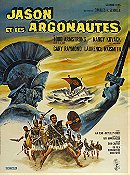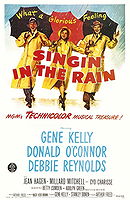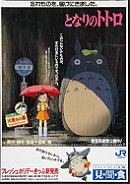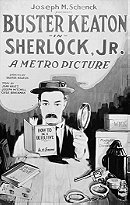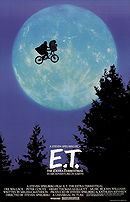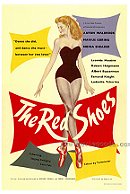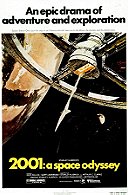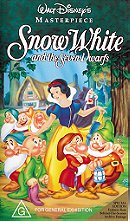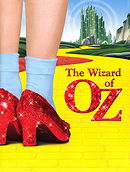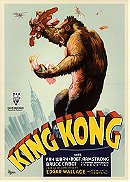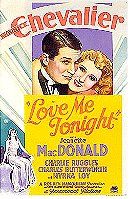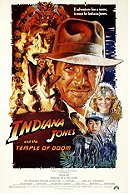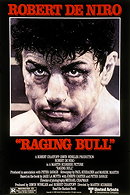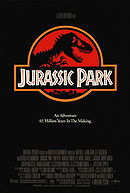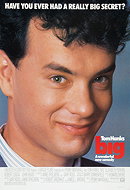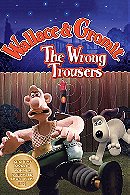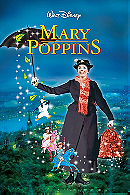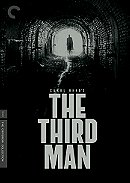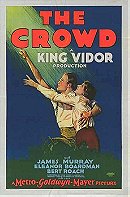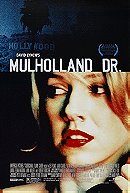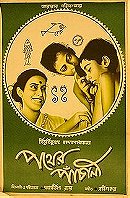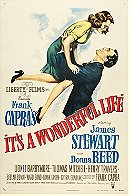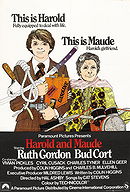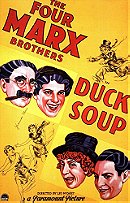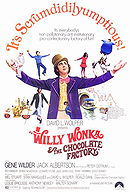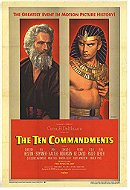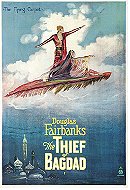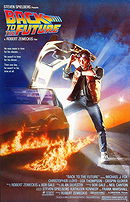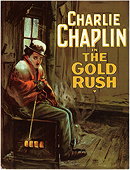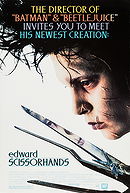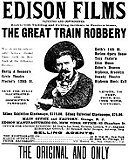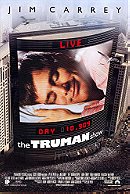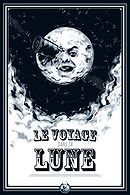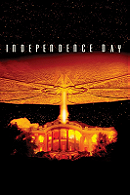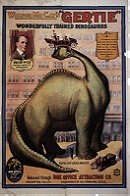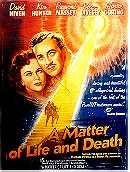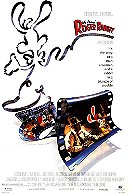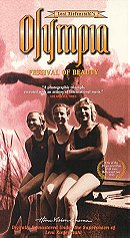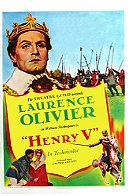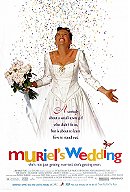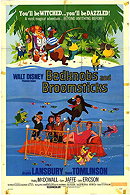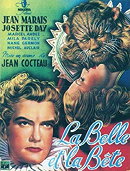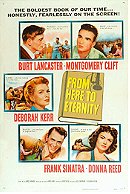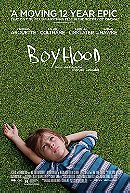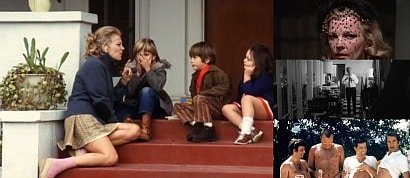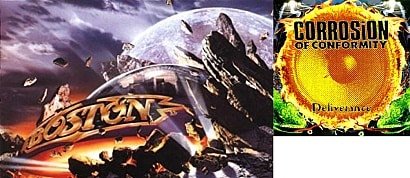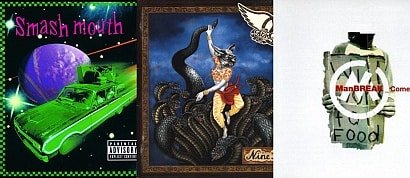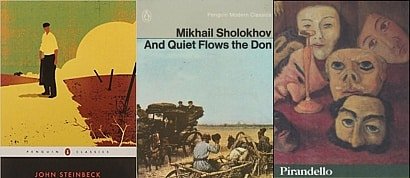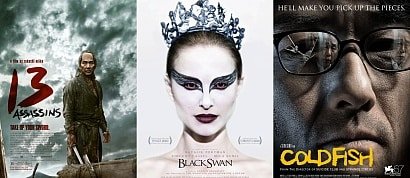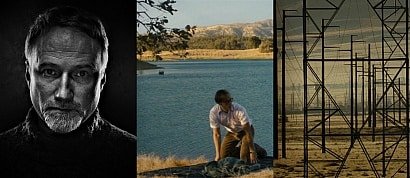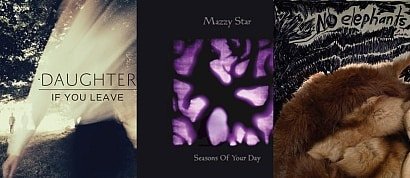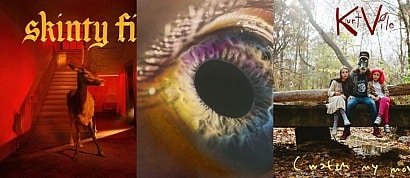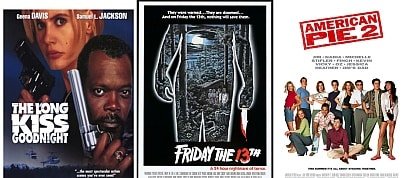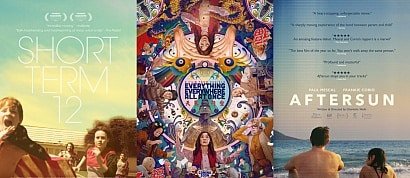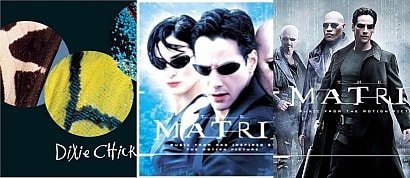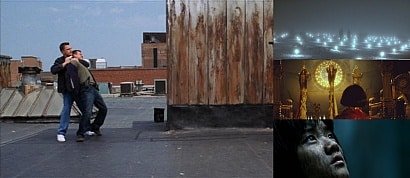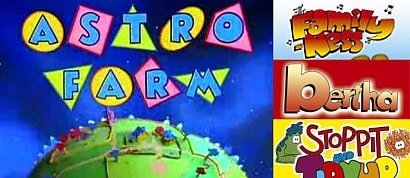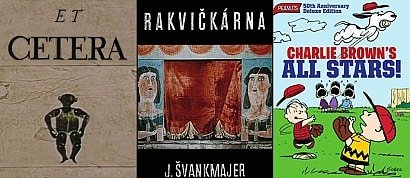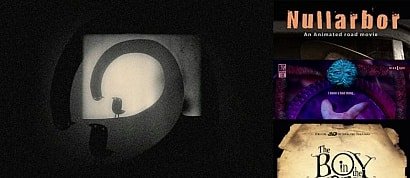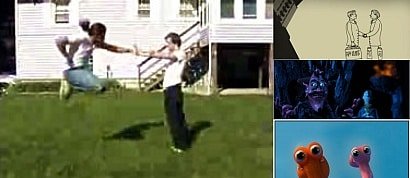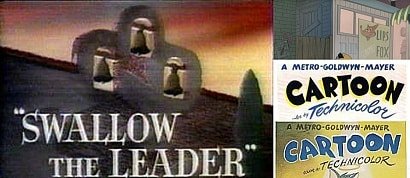50 Moments of Cinematic Wonder
Sort by:
Showing 50 items
Decade:
Rating:
List Type:
CLOSE ENCOUNTERS OF THE THIRD KIND - CONTACT
If asked to compile their own list of 50 movie moments that inspired awe and wonder in them, most people would have a Steven Spielberg film somewhere in the list. It should come as no surprise that his work has featured several times here or that one of his films has topped the list. Across the decades that Spielberg has been directing films, he has given audiences moments of joy, wonder, excitement, heartbreak and tension that have set the precedent for blockbuster cinema and have often proven difficult for Spielberg himself to top. I have several Spielberg films that vie for the title of my favourite and it's almost impossible to choose between the likes of 'Jaws', Indiana Jones and the Last Crusade' and 'Jurassic Park', 'Empire of the Sun', 'The Color Purple' and 'Bridge of Spies'. Different Spielbergs scratch different itches. But if forced to choose one of his films that I think is the absolute best, I'd go with 'Close Encounters of the Third Kind' because it's a film that quite simply makes me feel a certain way that no other film does. It is so unusual in its melancholy approach to fantastical storytelling that I can't find anything else the replicates its achievements, even within Spielberg's own canon.
Although it was often called a children's film by critics upon its release in 1977, 'Close Encounters of the Third Kind' is far from it. Though the threat of an alien presence looms over the whole film, for much of its runtime it focuses on the mental collapse of a not-entirely sympathetic man, Roy Neary (played with a mixture of comic brio and gut-wrenching authenticity by Richard Dreyfuss) and the subsequent implosion of his family unit. There is no reconciliation here, as there would probably have been in Spielberg's later, family-obsessed films that sometimes prized sentiment over integrity. Roy loses his family and comes close to losing his mind, his melancholy closure achieved through the uncertain opportunity to explore other worlds with alien beings. The excellent Melinda Dillon plays Jillian Guiler, a kindred spirit for Roy whose story is driven forward by the abduction of her infant son.
'Close Encounters of the Third Kind' was very obviously an extremely personal project for Spielberg. Based on 'Firelight', a homemade, feature length sci-fi film he had made at the age of 17, 'Close Encounters...' was written by Spielberg himself after he rejected two scripts by professional writers. He complained that they wanted to turn it into an adventure film while Spielberg himself envisaged a much more meditative, slow-paced movie. He was inspired by the way the Disney standard 'When You Wish Upon a Star' made him feel, a glacial concept that actually gives a fairly accurate idea of what to expect from 'Close Encounters of the Third Kind' if you can think in such abstract terms. There's a sense of discomfort that arises from the film because it doesn't tell you directly how to feel and as a result you can end up just feeling... weird. I certainly did after my first experience with it and went away under the impression that I didn't like it. But, like many of the best films, 'Close Encounters of the Third Kind' grows with every viewing and I never tire of returning to experience its tonal bizarreness.
So what makes 'Close Encounters of the Third Kind' my choice for number one? That would be its closing half hour. If there is a haunting sense of tonal ambiguity throughout the film, there is no doubt that in its climactic sequence 'Close Encounters of the Third Kind' reaches for and achieves a sense of complete wonder that has arguably never been replicated since. It's an emotional payoff that defies description and eschews easy answers or neatly tied-off story threads. This exquisite sequence simply approximates the experience of witnessing the first real contact between human beings and aliens. The five iconic musical notes used to establish communication chime throughout the scene, playful but haunting and resonating in the viewer's head for long after the credits roll. Blessed with a visual effects budget which he joked could have been used to produce an additional film, Douglas Trumbull created a jaw-dropping mothership and Spielberg knows exactly how little to show us of the aliens, who are viewed through a visually-impairing glare. When the film ends, I always find myself with an abundance of pent-up breath to exhale, giving me the impression that I've been holding my breath for the entirety of that final sequence's lengthy runtime. While I know this cannot have been the case, the scene takes me out of myself so completely that I still convince myself that it is entirely possible every time. At the behest of Columbia Pictures, Spielberg would ultimately make a director's cut of the film that included scenes of what it looked like inside the mothership, something he immediately regretted. Spielberg was well aware of the power of just showing us enough to stimulate that sense of wonder without answering all our questions. The mothership interior scenes may exist but that doesn't make them the definitive reality within this film's world. What it looks like on that ship, where it is headed, what will become of its inhabitants... we'll never truly know those things. We can only continue to wonder.
If asked to compile their own list of 50 movie moments that inspired awe and wonder in them, most people would have a Steven Spielberg film somewhere in the list. It should come as no surprise that his work has featured several times here or that one of his films has topped the list. Across the decades that Spielberg has been directing films, he has given audiences moments of joy, wonder, excitement, heartbreak and tension that have set the precedent for blockbuster cinema and have often proven difficult for Spielberg himself to top. I have several Spielberg films that vie for the title of my favourite and it's almost impossible to choose between the likes of 'Jaws', Indiana Jones and the Last Crusade' and 'Jurassic Park', 'Empire of the Sun', 'The Color Purple' and 'Bridge of Spies'. Different Spielbergs scratch different itches. But if forced to choose one of his films that I think is the absolute best, I'd go with 'Close Encounters of the Third Kind' because it's a film that quite simply makes me feel a certain way that no other film does. It is so unusual in its melancholy approach to fantastical storytelling that I can't find anything else the replicates its achievements, even within Spielberg's own canon.
Although it was often called a children's film by critics upon its release in 1977, 'Close Encounters of the Third Kind' is far from it. Though the threat of an alien presence looms over the whole film, for much of its runtime it focuses on the mental collapse of a not-entirely sympathetic man, Roy Neary (played with a mixture of comic brio and gut-wrenching authenticity by Richard Dreyfuss) and the subsequent implosion of his family unit. There is no reconciliation here, as there would probably have been in Spielberg's later, family-obsessed films that sometimes prized sentiment over integrity. Roy loses his family and comes close to losing his mind, his melancholy closure achieved through the uncertain opportunity to explore other worlds with alien beings. The excellent Melinda Dillon plays Jillian Guiler, a kindred spirit for Roy whose story is driven forward by the abduction of her infant son.
'Close Encounters of the Third Kind' was very obviously an extremely personal project for Spielberg. Based on 'Firelight', a homemade, feature length sci-fi film he had made at the age of 17, 'Close Encounters...' was written by Spielberg himself after he rejected two scripts by professional writers. He complained that they wanted to turn it into an adventure film while Spielberg himself envisaged a much more meditative, slow-paced movie. He was inspired by the way the Disney standard 'When You Wish Upon a Star' made him feel, a glacial concept that actually gives a fairly accurate idea of what to expect from 'Close Encounters of the Third Kind' if you can think in such abstract terms. There's a sense of discomfort that arises from the film because it doesn't tell you directly how to feel and as a result you can end up just feeling... weird. I certainly did after my first experience with it and went away under the impression that I didn't like it. But, like many of the best films, 'Close Encounters of the Third Kind' grows with every viewing and I never tire of returning to experience its tonal bizarreness.
So what makes 'Close Encounters of the Third Kind' my choice for number one? That would be its closing half hour. If there is a haunting sense of tonal ambiguity throughout the film, there is no doubt that in its climactic sequence 'Close Encounters of the Third Kind' reaches for and achieves a sense of complete wonder that has arguably never been replicated since. It's an emotional payoff that defies description and eschews easy answers or neatly tied-off story threads. This exquisite sequence simply approximates the experience of witnessing the first real contact between human beings and aliens. The five iconic musical notes used to establish communication chime throughout the scene, playful but haunting and resonating in the viewer's head for long after the credits roll. Blessed with a visual effects budget which he joked could have been used to produce an additional film, Douglas Trumbull created a jaw-dropping mothership and Spielberg knows exactly how little to show us of the aliens, who are viewed through a visually-impairing glare. When the film ends, I always find myself with an abundance of pent-up breath to exhale, giving me the impression that I've been holding my breath for the entirety of that final sequence's lengthy runtime. While I know this cannot have been the case, the scene takes me out of myself so completely that I still convince myself that it is entirely possible every time. At the behest of Columbia Pictures, Spielberg would ultimately make a director's cut of the film that included scenes of what it looked like inside the mothership, something he immediately regretted. Spielberg was well aware of the power of just showing us enough to stimulate that sense of wonder without answering all our questions. The mothership interior scenes may exist but that doesn't make them the definitive reality within this film's world. What it looks like on that ship, where it is headed, what will become of its inhabitants... we'll never truly know those things. We can only continue to wonder.
THE 7TH VOYAGE OF SINBAD/JASON AND THE ARGONAUTS - HARRYHAUSEN'S SKELETONS
Nathan Juran's spirited fantasy classic 'The 7th Voyage of Sinbad' was a staple of 80s and 90s UK TV schedules, making it as firm a favourite with my generation as it was with its original 1958 audience. Although Juran officially directed the film, the name more readily associated with this and the subsequent Sinbad films is that of Ray Harryhausen, the legendary visual effects creator whose work is the lynchpin of the series. Harryhausen's Dynamation technique ingeniously blends full colour, widescreen stop-motion animated figures with the live action actors to seamless effect. As with Harryhausen's mentor Willis O'Brien's famous work on 'King Kong', modern audiences have a better idea of how these effects were achieved but it doesn't lessen their impact. Having been taught by the best, Harryhausen does what all good students should and improves on the work of his master. The vibrant, beautiful creations in 'The 7th Voyage of Sinbad' still look completely alive today. The film knows the fantastical elements are its main attraction and does not skimp on giving the audience what it wants. While for many the Cyclops is the favourite character, for me the undoubted highlight is Sinbad's swordfight with a skeleton, an incredibly deft blending of live-action and animation which still astonishes today. As a cinematic-swordfight enthusiast, it always excites me when someone unsheathes a blade and this fantastic sequence measures up to classic fencing matches between two live action participants such as Errol Flynn and Basil Rathbone's epic face-off in 'The Adventures of Robin Hood'. But while that sequence (probably the finest cinematic swordfight of all time) delivered on the thrills, 'The 7th Voyage of Sinbad's equivalent sequence instils an extra sense of wonder by having one of its swordsmen be a supernatural being. And the removal of all flesh and organs makes him quite a phenomenal foe in a battle that relies on the presence of squishy bits to penetrate.
The skeleton swordfight worked so well that Harryhausen reworked it on an even more impressive scale for Don Chaffey's 1963 adventure 'Jason and the Argonauts', this time with seven of the sword-wielding skinless ones. Once again, few people could name the director of 'Jason and the Argonauts' because all its high-points were delivered courtesy of Harryhausen, often seen as the film's true auteur. The skeleton army became probably his most famous creation, with the thrilling battle sequence played again and again on film clip shows. Harryhausen achieved a perfect moment of fantasy-action-adventure here by using the inherent eeriness of the stop-motion animation technique to imbue the skeletons with an even greater nightmarish quality. The jerky movements of the horrific horde seem entirely consistent with how an audience might imagine skeletons to actually move.
Nathan Juran's spirited fantasy classic 'The 7th Voyage of Sinbad' was a staple of 80s and 90s UK TV schedules, making it as firm a favourite with my generation as it was with its original 1958 audience. Although Juran officially directed the film, the name more readily associated with this and the subsequent Sinbad films is that of Ray Harryhausen, the legendary visual effects creator whose work is the lynchpin of the series. Harryhausen's Dynamation technique ingeniously blends full colour, widescreen stop-motion animated figures with the live action actors to seamless effect. As with Harryhausen's mentor Willis O'Brien's famous work on 'King Kong', modern audiences have a better idea of how these effects were achieved but it doesn't lessen their impact. Having been taught by the best, Harryhausen does what all good students should and improves on the work of his master. The vibrant, beautiful creations in 'The 7th Voyage of Sinbad' still look completely alive today. The film knows the fantastical elements are its main attraction and does not skimp on giving the audience what it wants. While for many the Cyclops is the favourite character, for me the undoubted highlight is Sinbad's swordfight with a skeleton, an incredibly deft blending of live-action and animation which still astonishes today. As a cinematic-swordfight enthusiast, it always excites me when someone unsheathes a blade and this fantastic sequence measures up to classic fencing matches between two live action participants such as Errol Flynn and Basil Rathbone's epic face-off in 'The Adventures of Robin Hood'. But while that sequence (probably the finest cinematic swordfight of all time) delivered on the thrills, 'The 7th Voyage of Sinbad's equivalent sequence instils an extra sense of wonder by having one of its swordsmen be a supernatural being. And the removal of all flesh and organs makes him quite a phenomenal foe in a battle that relies on the presence of squishy bits to penetrate.
The skeleton swordfight worked so well that Harryhausen reworked it on an even more impressive scale for Don Chaffey's 1963 adventure 'Jason and the Argonauts', this time with seven of the sword-wielding skinless ones. Once again, few people could name the director of 'Jason and the Argonauts' because all its high-points were delivered courtesy of Harryhausen, often seen as the film's true auteur. The skeleton army became probably his most famous creation, with the thrilling battle sequence played again and again on film clip shows. Harryhausen achieved a perfect moment of fantasy-action-adventure here by using the inherent eeriness of the stop-motion animation technique to imbue the skeletons with an even greater nightmarish quality. The jerky movements of the horrific horde seem entirely consistent with how an audience might imagine skeletons to actually move.
SINGIN' IN THE RAIN - JUST SINGIN' AND DANCIN' IN THE RAIN
Producer Arthur Freed headed a unit at MGM that consistently turned out some of the brightest, most uplifting musical films of the 40s and 50s. The greatest of them all, Stanley Donen's 'Singin' in the Rain' is packed with astonishing musical numbers, all realised to perfection in heart-melting Technicolor and strung together smoothly into a plotline that is not only coherent but also hilarious, emotionally-engaging and informative. Practically every routine in 'Singin' in the Rain' is a resounding success but it isn't hard to pick out the most iconic scene. That would, of course, be Gene Kelly's lovestruck dance in the rainstorm to the film's title song. While it isn't necessarily the film's highlight (which should indicate the level of quality we're talking about), this sequence has become one of the most famous in the history of cinema for a reason. It still stands as perhaps the silver screen's more effective expression of cinematic joy. Despite having a 103 degree fever at the time of filming, Kelly splashes through puddles and is pelted with persistent precipitation without ever once losing his delirious smile. As a visual metaphor for falling in love it's utterly perfect. For anyone who has ever be caught in a rainstorm and got so thoroughly drenched that they've gone beyond caring and started to actually enjoy it, this scene will strike a chord. Like throwing caution to the wind while plunging headlong into a new romance, it's a moment that ignores the potential dangers of the situation and thrives on the pure joy of the experience. The viewer can practically feel the raindrops on their own skin as they watch Kelly wade through the streets and leap up lampposts, and yet the warm internal glow it inspires ward off any fears of catching a chill. The scene has been enshrined in history through repetition, homage and pastiche but its power is such that it cannot be diminished by over-exposure or superseded by parody in the way 'Airplane!' made it impossible to watch 70s disaster movies without waiting for something ridiculous to happen. How wonderful that one of cinema's most enduring moments is also such a positive experience. Free from guns, explosions, tears, raised voices, slapped faces and broken hearts, this is an awe-inspiring moment based on complete gay abandon and the willingness to embrace the uncynical notion of love's power to elevate us to a whole new level of joy. And all this just from singin'... and dancin'... in the rain!
Producer Arthur Freed headed a unit at MGM that consistently turned out some of the brightest, most uplifting musical films of the 40s and 50s. The greatest of them all, Stanley Donen's 'Singin' in the Rain' is packed with astonishing musical numbers, all realised to perfection in heart-melting Technicolor and strung together smoothly into a plotline that is not only coherent but also hilarious, emotionally-engaging and informative. Practically every routine in 'Singin' in the Rain' is a resounding success but it isn't hard to pick out the most iconic scene. That would, of course, be Gene Kelly's lovestruck dance in the rainstorm to the film's title song. While it isn't necessarily the film's highlight (which should indicate the level of quality we're talking about), this sequence has become one of the most famous in the history of cinema for a reason. It still stands as perhaps the silver screen's more effective expression of cinematic joy. Despite having a 103 degree fever at the time of filming, Kelly splashes through puddles and is pelted with persistent precipitation without ever once losing his delirious smile. As a visual metaphor for falling in love it's utterly perfect. For anyone who has ever be caught in a rainstorm and got so thoroughly drenched that they've gone beyond caring and started to actually enjoy it, this scene will strike a chord. Like throwing caution to the wind while plunging headlong into a new romance, it's a moment that ignores the potential dangers of the situation and thrives on the pure joy of the experience. The viewer can practically feel the raindrops on their own skin as they watch Kelly wade through the streets and leap up lampposts, and yet the warm internal glow it inspires ward off any fears of catching a chill. The scene has been enshrined in history through repetition, homage and pastiche but its power is such that it cannot be diminished by over-exposure or superseded by parody in the way 'Airplane!' made it impossible to watch 70s disaster movies without waiting for something ridiculous to happen. How wonderful that one of cinema's most enduring moments is also such a positive experience. Free from guns, explosions, tears, raised voices, slapped faces and broken hearts, this is an awe-inspiring moment based on complete gay abandon and the willingness to embrace the uncynical notion of love's power to elevate us to a whole new level of joy. And all this just from singin'... and dancin'... in the rain!
My Neighbor Totoro (1988)
MY NEIGHBOUR TOTORO - WAITING FOR THE CATBUS
Frequently named as the best of the Studio Ghibli films and one of the crowning achievements of director Hayao Miyazaki, 'My Neighbour Totoro' is a film whose immense charm and simple magic crept up on me. The first time I watched it, I enjoyed it but its masterpiece status passed me by, probably due to its unpredictable narrative shifts which seem completely logical on subsequent viewings. Perhaps the greatest shock of 'My Neighbour Totoro' for those who are more familiar with Miyazaki's subsequent work is just how little fantastical content there is. The film has a solid backbone of enchantment but it is used sparingly. The appearances by woodland sprites are spaced out and only occur after long stretches of realistic, domestic story. This ultimately makes for a more measured and tonally fascinating film and each time I see it I love 'My Neighbour Totoro' more. One scene in particular stands out though and its gentle but eerie atmosphere resonates throughout the film. The scene the scene in question finds 'My Neighbour Totoro's two young protagonists waiting for their father at an isolated bus stop. When he fails to arrive on the expected bus and with the rain getting heavy, the two girls become worried. The younger girl, Mei, eventually falls asleep on her older sister Tatsuo's back. At this point, the titular Totoro arrives at the bus stop. Mei has met him before but this is Tatsuo's first encounter with the large forest sprite. As Totoro joins her in waiting at the bus stop, Tatsuo offers him a spare umbrella to replace the ineffectual leaf he is using for defence against the rain. Totoro is grateful and excited by the sounds the raindrops make on the umbrella. In thanks, he gives Tatsuo a bundle of nuts and seeds. Then a large cat-shaped bus arrives, which Totoro boards and leaves on. Once he is gone, the girls' father finally arrives. It's hard to explain just what makes this simple encounter one of the most perfectly executed scenes in animation history. It certainly doesn't sound that way on paper. But on screen Miyazaki creates a sense of wonder like no other. He manages to capture both the magic of a childhood viewpoint and a tendency of some children to respond to fantastical things almost as if they were everyday occurrences. The average adult would probably have run away at the sight of Totoro. Tatsuo offers him an umbrella.
Frequently named as the best of the Studio Ghibli films and one of the crowning achievements of director Hayao Miyazaki, 'My Neighbour Totoro' is a film whose immense charm and simple magic crept up on me. The first time I watched it, I enjoyed it but its masterpiece status passed me by, probably due to its unpredictable narrative shifts which seem completely logical on subsequent viewings. Perhaps the greatest shock of 'My Neighbour Totoro' for those who are more familiar with Miyazaki's subsequent work is just how little fantastical content there is. The film has a solid backbone of enchantment but it is used sparingly. The appearances by woodland sprites are spaced out and only occur after long stretches of realistic, domestic story. This ultimately makes for a more measured and tonally fascinating film and each time I see it I love 'My Neighbour Totoro' more. One scene in particular stands out though and its gentle but eerie atmosphere resonates throughout the film. The scene the scene in question finds 'My Neighbour Totoro's two young protagonists waiting for their father at an isolated bus stop. When he fails to arrive on the expected bus and with the rain getting heavy, the two girls become worried. The younger girl, Mei, eventually falls asleep on her older sister Tatsuo's back. At this point, the titular Totoro arrives at the bus stop. Mei has met him before but this is Tatsuo's first encounter with the large forest sprite. As Totoro joins her in waiting at the bus stop, Tatsuo offers him a spare umbrella to replace the ineffectual leaf he is using for defence against the rain. Totoro is grateful and excited by the sounds the raindrops make on the umbrella. In thanks, he gives Tatsuo a bundle of nuts and seeds. Then a large cat-shaped bus arrives, which Totoro boards and leaves on. Once he is gone, the girls' father finally arrives. It's hard to explain just what makes this simple encounter one of the most perfectly executed scenes in animation history. It certainly doesn't sound that way on paper. But on screen Miyazaki creates a sense of wonder like no other. He manages to capture both the magic of a childhood viewpoint and a tendency of some children to respond to fantastical things almost as if they were everyday occurrences. The average adult would probably have run away at the sight of Totoro. Tatsuo offers him an umbrella.
Sherlock, Jr. (1924)
SHERLOCK JR. - THE PROJECTIONIST ENTERS THE SCREEN
Buster Keaton is cool. He oozes it. The fixed, neutral expression, the astonishing control he has over his own body, the heroic execution of those jaw-dropping stunts. I'd say he was up there with the coolest screen presences of all time. But despite their winning physical dexterity and the fact that they always win through in the end, Keaton's characters are usually portrayed as part-hero, part-sap. From the effete son of a manly riverboat captain in 'Steamboat Bill Jr.' or the shamed army reject in 'The General', his displays of acrobatic heroism are usually intended to prove himself to someone he has somehow disappointed, or else as a means of escape from a disastrous situation he has clumsily wandered into. 'Sherlock Jr.' takes a different approach by separating the sap Keaton and the cool Keaton into two different entities. In the film's framing device, Keaton is the sap; a movie projectionist who is framed for a crime and whose attempts at amateur sleuthing to catch the real culprit are abandoned as a disaster almost immediately. However, as he dejectedly returns to his day job, Keaton falls asleep and dreams himself to be a heroic figure; the great detective Sherlock Jr. Haven't we all at some point looked to the icons of the silver screen and wished we could step into their shoes; be as cool or glamorous or heroic. 'Sherlock Jr.' puts this dream up on screen for us but it is in the transition from sap to hero that it offers the most awe-inspiring moment. From hereon in, the film is full of tricks and stunts, some of them down to technical wizardry, others more closely linked to traditional stage conjuring, but it is the first of these that still stands as the greatest as Keaton steps out of his own sleeping body and walks up the cinema aisle right into the screen, where he joins the action of the movie. What follows is one of my favourite scenes of all time; Keaton remains on screen as the background changes behind him several times, causing surfaces to disappear from under him or objects to suddenly appear in his path. The transition from background to background is astonishingly smooth and Keaton revealed years later that he and his cameraman used surveyor's equipment to position Keaton and the camera in exactly the right position. This excruciating process paid off in spades. Using a simple but extraordinarily effective visual trick, cinemagic was achieved. As early as 1924, Keaton took one of humankind's greatest dreams and appeared to make it a reality.
Buster Keaton is cool. He oozes it. The fixed, neutral expression, the astonishing control he has over his own body, the heroic execution of those jaw-dropping stunts. I'd say he was up there with the coolest screen presences of all time. But despite their winning physical dexterity and the fact that they always win through in the end, Keaton's characters are usually portrayed as part-hero, part-sap. From the effete son of a manly riverboat captain in 'Steamboat Bill Jr.' or the shamed army reject in 'The General', his displays of acrobatic heroism are usually intended to prove himself to someone he has somehow disappointed, or else as a means of escape from a disastrous situation he has clumsily wandered into. 'Sherlock Jr.' takes a different approach by separating the sap Keaton and the cool Keaton into two different entities. In the film's framing device, Keaton is the sap; a movie projectionist who is framed for a crime and whose attempts at amateur sleuthing to catch the real culprit are abandoned as a disaster almost immediately. However, as he dejectedly returns to his day job, Keaton falls asleep and dreams himself to be a heroic figure; the great detective Sherlock Jr. Haven't we all at some point looked to the icons of the silver screen and wished we could step into their shoes; be as cool or glamorous or heroic. 'Sherlock Jr.' puts this dream up on screen for us but it is in the transition from sap to hero that it offers the most awe-inspiring moment. From hereon in, the film is full of tricks and stunts, some of them down to technical wizardry, others more closely linked to traditional stage conjuring, but it is the first of these that still stands as the greatest as Keaton steps out of his own sleeping body and walks up the cinema aisle right into the screen, where he joins the action of the movie. What follows is one of my favourite scenes of all time; Keaton remains on screen as the background changes behind him several times, causing surfaces to disappear from under him or objects to suddenly appear in his path. The transition from background to background is astonishingly smooth and Keaton revealed years later that he and his cameraman used surveyor's equipment to position Keaton and the camera in exactly the right position. This excruciating process paid off in spades. Using a simple but extraordinarily effective visual trick, cinemagic was achieved. As early as 1924, Keaton took one of humankind's greatest dreams and appeared to make it a reality.
E.T. THE EXTRA-TERRESTRIAL - FLYING BICYCLES
The 1980s was a decade when children began to be taken seriously as the main protagonists of films. Too often side-lined, their viewpoints trivialised or patronised, children had been dealt a raw deal in movies for decades. But with their shift towards more ambitious fantasy storylines and visual-effects-based wonderment, the 80s foregrounded the age-group most likely to be immediately susceptible to believing in fantastical beings as soon as their materialised before their eyes. The 80s was also the decade that saw a significant growth in the number of bike-riding scenes on cinema screens. This obviously went hand-in-hand with the greater ratio of pre-teen protagonists but bicycles also seemed to become a metaphor for the empowerment of a younger audience. Frequently pitted against larger, more powerful vehicles driven by adults, the comparatively delicate, wiry frames of pushbikes triumphed time and time again, outrunning cars, trucks and buses by virtue of their spindly manoeuvrability and the unrestrained ingenuity of their riders. For a whole generation of kids, bikes were an exciting visual experience without the intervention of magic but Steven Spielberg's 1982 megahit 'E.T. the Extra-Terrestrial' surely planted the seeds for the proliferation of bike scenes and even as later films like 'BMX Bandits' kept the thrills more grounded, the notion that the trusty two-wheeler might take to the sky at any moment never left the heads of any kid who saw the former film. It's a moment of such simplicity and yet such impact that even the dating of the effects cannot wither it. Elliot, with E.T. in the basket of his bicycle, is lifted into the air by the alien's telekinetic powers and flies in silhouette across the moon. Carried aloft by John William's heart-saturating score, its a cinematic ride of a lifetime which occurs again at the height of an integral chase scene, this time with E.T.'s powers launching a whole group of heroic children skyward. Later in the film, Spielberg gives us a spaceship but by comparison it is almost anticlimactic. It was the bikes that stuck in people's minds and 'E.T' imbued this simple mode of transport with a whole new level of cinematic power.
The 1980s was a decade when children began to be taken seriously as the main protagonists of films. Too often side-lined, their viewpoints trivialised or patronised, children had been dealt a raw deal in movies for decades. But with their shift towards more ambitious fantasy storylines and visual-effects-based wonderment, the 80s foregrounded the age-group most likely to be immediately susceptible to believing in fantastical beings as soon as their materialised before their eyes. The 80s was also the decade that saw a significant growth in the number of bike-riding scenes on cinema screens. This obviously went hand-in-hand with the greater ratio of pre-teen protagonists but bicycles also seemed to become a metaphor for the empowerment of a younger audience. Frequently pitted against larger, more powerful vehicles driven by adults, the comparatively delicate, wiry frames of pushbikes triumphed time and time again, outrunning cars, trucks and buses by virtue of their spindly manoeuvrability and the unrestrained ingenuity of their riders. For a whole generation of kids, bikes were an exciting visual experience without the intervention of magic but Steven Spielberg's 1982 megahit 'E.T. the Extra-Terrestrial' surely planted the seeds for the proliferation of bike scenes and even as later films like 'BMX Bandits' kept the thrills more grounded, the notion that the trusty two-wheeler might take to the sky at any moment never left the heads of any kid who saw the former film. It's a moment of such simplicity and yet such impact that even the dating of the effects cannot wither it. Elliot, with E.T. in the basket of his bicycle, is lifted into the air by the alien's telekinetic powers and flies in silhouette across the moon. Carried aloft by John William's heart-saturating score, its a cinematic ride of a lifetime which occurs again at the height of an integral chase scene, this time with E.T.'s powers launching a whole group of heroic children skyward. Later in the film, Spielberg gives us a spaceship but by comparison it is almost anticlimactic. It was the bikes that stuck in people's minds and 'E.T' imbued this simple mode of transport with a whole new level of cinematic power.
The Red Shoes (1948)
THE RED SHOES - THE RED SHOES BALLET
The films of Powell and Pressburger had offered much wonder to the world through a combination of unashamed romanticism, sumptuous use of colour, epic scope and intelligent, unusual storytelling. Ambition abounds in their work and generally pays off in spades, resulting in some of the most memorable moments in all world cinema. Perhaps the most striking of all these moments, and one which undoubtedly makes ample use of all the attributes listed above, is the 'Red Shoes Ballet' sequence in the acclaimed 1948 drama 'The Red Shoes'. The story of an aspiring ballerina torn between her love for a man and her love for her art, 'The Red Shoes' ostensibly breaks from its central storyline midway through to present a 15 minute ballet sequence based on Hans Christian Andersen's story of a young woman forced to dance herself to death when she puts on a pair of enchanted red ballet shoes. But the ballet, while rightly celebrated for its visual achievements, also ties in thematically with the narrative and Powell and Pressburger underline this fact by not only incorporating elements of what an audience member's imagination would add to a stage production but also flashes of the inner concerns of the dancer herself. These thematic ties ensure that this astonishing sequence can never be written off as a self-conscious flourish or mere showing off. It is integral to the plot and enhances the emotional impact of what could have easily descended into boneless melodrama. But even for those who don't make the connection between what happens on and off the stage, the ballet sequence is still an astonishing and beautiful experience. Danced impeccably by famous ballet dancers Moria Shearer, Robert Helpmann and Leonide Massine among many others, the ballet is presented as a stylised step through the looking glass, with the performers appearing as painted grotesques like nightmare marionettes brought to life. The scenery is wilfully artificial but mesmerizingly magical and visual tricks such as items disappearing and reappearing or Shearer's character visualising herself in the red shoes and appearing as a ghostly image in front of her own eyes remind the viewer that we are not just seeing what the audience watching the ballet is seeing but are being granted a vision of what is happening inside their imagination as it is stimulated by dance.
The films of Powell and Pressburger had offered much wonder to the world through a combination of unashamed romanticism, sumptuous use of colour, epic scope and intelligent, unusual storytelling. Ambition abounds in their work and generally pays off in spades, resulting in some of the most memorable moments in all world cinema. Perhaps the most striking of all these moments, and one which undoubtedly makes ample use of all the attributes listed above, is the 'Red Shoes Ballet' sequence in the acclaimed 1948 drama 'The Red Shoes'. The story of an aspiring ballerina torn between her love for a man and her love for her art, 'The Red Shoes' ostensibly breaks from its central storyline midway through to present a 15 minute ballet sequence based on Hans Christian Andersen's story of a young woman forced to dance herself to death when she puts on a pair of enchanted red ballet shoes. But the ballet, while rightly celebrated for its visual achievements, also ties in thematically with the narrative and Powell and Pressburger underline this fact by not only incorporating elements of what an audience member's imagination would add to a stage production but also flashes of the inner concerns of the dancer herself. These thematic ties ensure that this astonishing sequence can never be written off as a self-conscious flourish or mere showing off. It is integral to the plot and enhances the emotional impact of what could have easily descended into boneless melodrama. But even for those who don't make the connection between what happens on and off the stage, the ballet sequence is still an astonishing and beautiful experience. Danced impeccably by famous ballet dancers Moria Shearer, Robert Helpmann and Leonide Massine among many others, the ballet is presented as a stylised step through the looking glass, with the performers appearing as painted grotesques like nightmare marionettes brought to life. The scenery is wilfully artificial but mesmerizingly magical and visual tricks such as items disappearing and reappearing or Shearer's character visualising herself in the red shoes and appearing as a ghostly image in front of her own eyes remind the viewer that we are not just seeing what the audience watching the ballet is seeing but are being granted a vision of what is happening inside their imagination as it is stimulated by dance.
2001: A SPACE ODYSSEY - STAR GATE TO STARCHILD
Though there are many who find his films too coldly clinical, few could deny the impressive diversity of Stanley Kubrick's filmography which includes historical epics, psychosexual dramas, searing anti-war treatises, an iconic horror film and pitch black comedies. Sandwiched between two of the latter, '2001: A Space Odyssey' was a shockingly different kind of film which used striking visual imagery to examine the continuing evolution of humankind against a backdrop of hitherto unexplored space. Although it would seem like the obvious choice to point to in illustration of Kubrick's coldness, '2001: A Space Odyssey' is in fact one of the director's most emotionally engaging films. In presenting us with human characters who are essentially ciphers (the monotoned computer HAL is famously the most memorable character among them), Kubrick takes a step back from narrative conventions to instead present us with a largely visual philosophical experience. In doing so, he aims to inspire a sense of wonder in the audience that is far removed from the cynicism and emotional disengagement of which he is sometimes accused. '2001: A Space Odyssey' utterly relies on the viewer allowing their breath to be taken away and their minds to be opened and challenged. It is a visual feast whose slow pace is deliberate in order to allow the audience time to fully drink in the images before them. With such grand ambitions, '2001: A Space Odyssey' required a suitably striking ending in order to not fall into the trap of anti-climax. The film more than delivers on this promise when astronaut David Bowman finds his pod pulled into a star gate, a vortex of coloured light which launches him across vast swathes of space and time. During this lengthy sequence, we witness numerous space landscapes and cosmological phenomena drenched in vivid colours. Kubrick establishes what we are seeing as the viewpoint of Bowman by inserting the famous shot of the astronaut's blinking eye with the colours changing with each blink. Finally, Bowman finds himself in an isolated room where he first witness and then suddenly becomes older versions of himself. Visited by a vision of the large black monolith that has appeared throughout the film, the dying elderly Bowman reaches for it and is seemingly transformed into the Star Child, a vast fetus encased in glowing light hanging in Earth's orbit. The enormous, wonderstruck baby both stimulates and reflects the audience's awestruck reaction as he too gazes in fascination at the comparatively tiny planet beside him. Whether you can make head nor tail of '2001: A Space Odyssey's plot shouldn't matter to those susceptible to its unique visual experience. It taps into numerous big questions about space, time and our own existence but encourages us to meditate on them separately rather than look to the film for definitive answers.
Though there are many who find his films too coldly clinical, few could deny the impressive diversity of Stanley Kubrick's filmography which includes historical epics, psychosexual dramas, searing anti-war treatises, an iconic horror film and pitch black comedies. Sandwiched between two of the latter, '2001: A Space Odyssey' was a shockingly different kind of film which used striking visual imagery to examine the continuing evolution of humankind against a backdrop of hitherto unexplored space. Although it would seem like the obvious choice to point to in illustration of Kubrick's coldness, '2001: A Space Odyssey' is in fact one of the director's most emotionally engaging films. In presenting us with human characters who are essentially ciphers (the monotoned computer HAL is famously the most memorable character among them), Kubrick takes a step back from narrative conventions to instead present us with a largely visual philosophical experience. In doing so, he aims to inspire a sense of wonder in the audience that is far removed from the cynicism and emotional disengagement of which he is sometimes accused. '2001: A Space Odyssey' utterly relies on the viewer allowing their breath to be taken away and their minds to be opened and challenged. It is a visual feast whose slow pace is deliberate in order to allow the audience time to fully drink in the images before them. With such grand ambitions, '2001: A Space Odyssey' required a suitably striking ending in order to not fall into the trap of anti-climax. The film more than delivers on this promise when astronaut David Bowman finds his pod pulled into a star gate, a vortex of coloured light which launches him across vast swathes of space and time. During this lengthy sequence, we witness numerous space landscapes and cosmological phenomena drenched in vivid colours. Kubrick establishes what we are seeing as the viewpoint of Bowman by inserting the famous shot of the astronaut's blinking eye with the colours changing with each blink. Finally, Bowman finds himself in an isolated room where he first witness and then suddenly becomes older versions of himself. Visited by a vision of the large black monolith that has appeared throughout the film, the dying elderly Bowman reaches for it and is seemingly transformed into the Star Child, a vast fetus encased in glowing light hanging in Earth's orbit. The enormous, wonderstruck baby both stimulates and reflects the audience's awestruck reaction as he too gazes in fascination at the comparatively tiny planet beside him. Whether you can make head nor tail of '2001: A Space Odyssey's plot shouldn't matter to those susceptible to its unique visual experience. It taps into numerous big questions about space, time and our own existence but encourages us to meditate on them separately rather than look to the film for definitive answers.
SNOW WHITE AND THE SEVEN DWARFS - THE TRANSFORMATION OF THE WICKED QUEEN
It may not have been the first full-length animated feature film as is so often misreported (it was beaten to the screen by Ladislas Starevich's 'The Tale of the Fox', the Diehl Brothers' 'The Seven Ravens', Lotte Reiniger's 'The Adventures of Prince Achmed and several lost films by Quirino Cristiani) but Walt Disney's first full length animated feature remains the most important and influential film of feature animation's infancy, not to mention its very best.
But historical importance is not enough alone to make a film so enduringly beloved by audiences of all ages. 'Snow White and the Seven Dwarfs' remains at the top end of every list of greatest animations because it is simply one of the most breathtaking cinematic experiences ever. For all the technological advancements of the subsequent decades, 'Snow White and the Seven Dwarfs' still looks more sumptuous and impressive than any of its successors. Although years of hard work were put into making it this way, the film's trump card is in making it all seem effortless. In 'Bambi' you can practically see the animator's sweat on the drawings as they strive to make the most realistic creations possible but 'Snow White...'s characters just seem to already exist on screen, as if they've always been there awaiting our arrival. There are many charming sequences throughout the film but the one that sticks with most viewers more than any other is the transformation of the Wicked Queen into the old peddler, a disguise adopted in order to fool the trusting Snow White into eating the poisoned apple that almost becomes her end. Transformation scenes have recurred throughout cinema's history and have been achieved through clever lighting, editing, make-up or visual effects. The medium of animation would seem to remove some of the difficulties in achieving a convincing metamorphosis but to achieve a convincing transformation the animation has to retain a level of subtlety while also fully convincing the audience of the change. Have someone wither unconvincingly in plain sight and the credibility of the scene withers along with them. With its impeccably realised atmosphere, the scene in which the Wicked Queen concocts and drinks the potion builds up the adrenaline through the magnificent cobwebby backgrounds, the malevolent urgency of the way the Queen is animated and the audience's shrinking surrogate in the form of a terrified, onlooking crow. With the obligatory thunderstorm raging in the background, we see only parts of the transformation in full. Soft, young hands become gnarled claws and a regal silhouette bends double and is consumed by a black cloak. Finally, the old hag emerges from beneath the cloak, causing the crow to collapse in fright into a hollowed out skull. Unlike in the frankly terrifying 'Pinocchio', here the horror is never oversold. The result of the transformation, given that it is intended to inspire pity rather than fear in its victim, is not particularly scary but the transformation itself is. It remains one of the finest screen shape-shifts of all time.
It may not have been the first full-length animated feature film as is so often misreported (it was beaten to the screen by Ladislas Starevich's 'The Tale of the Fox', the Diehl Brothers' 'The Seven Ravens', Lotte Reiniger's 'The Adventures of Prince Achmed and several lost films by Quirino Cristiani) but Walt Disney's first full length animated feature remains the most important and influential film of feature animation's infancy, not to mention its very best.
But historical importance is not enough alone to make a film so enduringly beloved by audiences of all ages. 'Snow White and the Seven Dwarfs' remains at the top end of every list of greatest animations because it is simply one of the most breathtaking cinematic experiences ever. For all the technological advancements of the subsequent decades, 'Snow White and the Seven Dwarfs' still looks more sumptuous and impressive than any of its successors. Although years of hard work were put into making it this way, the film's trump card is in making it all seem effortless. In 'Bambi' you can practically see the animator's sweat on the drawings as they strive to make the most realistic creations possible but 'Snow White...'s characters just seem to already exist on screen, as if they've always been there awaiting our arrival. There are many charming sequences throughout the film but the one that sticks with most viewers more than any other is the transformation of the Wicked Queen into the old peddler, a disguise adopted in order to fool the trusting Snow White into eating the poisoned apple that almost becomes her end. Transformation scenes have recurred throughout cinema's history and have been achieved through clever lighting, editing, make-up or visual effects. The medium of animation would seem to remove some of the difficulties in achieving a convincing metamorphosis but to achieve a convincing transformation the animation has to retain a level of subtlety while also fully convincing the audience of the change. Have someone wither unconvincingly in plain sight and the credibility of the scene withers along with them. With its impeccably realised atmosphere, the scene in which the Wicked Queen concocts and drinks the potion builds up the adrenaline through the magnificent cobwebby backgrounds, the malevolent urgency of the way the Queen is animated and the audience's shrinking surrogate in the form of a terrified, onlooking crow. With the obligatory thunderstorm raging in the background, we see only parts of the transformation in full. Soft, young hands become gnarled claws and a regal silhouette bends double and is consumed by a black cloak. Finally, the old hag emerges from beneath the cloak, causing the crow to collapse in fright into a hollowed out skull. Unlike in the frankly terrifying 'Pinocchio', here the horror is never oversold. The result of the transformation, given that it is intended to inspire pity rather than fear in its victim, is not particularly scary but the transformation itself is. It remains one of the finest screen shape-shifts of all time.
The Wizard of Oz (1939)
THE WIZARD OF OZ - DOROTHY OPENS THE DOOR TO OZ
Although it is significantly different from L. Frank Baum's source novel, the beloved 1939 film version of 'The Wizard of Oz' presents its own interpretation with a laudable coherence and internal logic, surprising given the amount of contributors working with such fantastical material. One major change the film made was to couch the land of Oz in realistic terms by making it the subject of a dream in the mind of farm girl Dorothy Gale (an enchanting Judy Garland). While some devotees of the book found this change controversial, it resulted in one of 'The Wizard of Oz's greatest moments in the transition from its real-world to dream-world settings. The scenes on and around the Kansas farm are presented in black and white, suggesting a dull existence from which Dorothy longs to escape over a rainbow which she can presumably only see in shades of grey. After the house is caught up in a tornado and hurled into the wonderful world of Oz however, the images on screen are suddenly transformed into sumptuous colour. The transition between these two stages is exquisite. We see Dorothy perform the simple task of opening a door and immediately the image transforms from monochrome to glorious Technicolor, which remains until Dorothy wakes up at the film's climax. While the film ultimately proffers the conservative message 'There's no place like home', it undercuts this with its presentation of these two contrasting worlds. It's impossible to imagine 'The Wizard of Oz' having succeeded as a black and white film. Colour is so important from the yellow brick road to the Emerald City and to drain this visual vibrancy away would be to rob the film of the vivid context required to make its outlandish jokes, wilfully cornball wordplay and larger-than-life characterisations work. The juxtaposition of the two worlds of the film using colour and black and white suggest an unspoken acknowledgement that while home may be where the heart is, sometimes we all need a Technicolor break from the mundanity of the everyday.
Although it is significantly different from L. Frank Baum's source novel, the beloved 1939 film version of 'The Wizard of Oz' presents its own interpretation with a laudable coherence and internal logic, surprising given the amount of contributors working with such fantastical material. One major change the film made was to couch the land of Oz in realistic terms by making it the subject of a dream in the mind of farm girl Dorothy Gale (an enchanting Judy Garland). While some devotees of the book found this change controversial, it resulted in one of 'The Wizard of Oz's greatest moments in the transition from its real-world to dream-world settings. The scenes on and around the Kansas farm are presented in black and white, suggesting a dull existence from which Dorothy longs to escape over a rainbow which she can presumably only see in shades of grey. After the house is caught up in a tornado and hurled into the wonderful world of Oz however, the images on screen are suddenly transformed into sumptuous colour. The transition between these two stages is exquisite. We see Dorothy perform the simple task of opening a door and immediately the image transforms from monochrome to glorious Technicolor, which remains until Dorothy wakes up at the film's climax. While the film ultimately proffers the conservative message 'There's no place like home', it undercuts this with its presentation of these two contrasting worlds. It's impossible to imagine 'The Wizard of Oz' having succeeded as a black and white film. Colour is so important from the yellow brick road to the Emerald City and to drain this visual vibrancy away would be to rob the film of the vivid context required to make its outlandish jokes, wilfully cornball wordplay and larger-than-life characterisations work. The juxtaposition of the two worlds of the film using colour and black and white suggest an unspoken acknowledgement that while home may be where the heart is, sometimes we all need a Technicolor break from the mundanity of the everyday.
King Kong (1933)
KING KONG - KONG ATOP THE EMPIRE STATE BUILDING
There are few people out there, regardless of age, who don't know the name King Kong. The magnificent ape (or 'The Eight Wonder of the World' as the film itself would have it) has never been far from the minds of movie producers and cineastes, following up his game-changing debut with numerous sequels, remakes, parodies and even appearances in popular songs keeping his light burning brightly down the decades. The prospect of revisiting Skull Island and its numerous deadly beasts has proved too tempting for filmmakers to resist but thus far there has been no incarnation of Kong as thrilling as the first one. Although the stop-motion movements of the massive monkey are obvious to modern audiences and often provoke laughter in place of awe, at the time of 'King Kong's release the beast seemed like a genuine miracle and the interactions between him and the human cast baffled many an enchanted movie-goer. For anyone with a sense of history and an ability to adjust their perception to experience the wonderment of another era's audience, this enchantment is easy to tune into and even those who initially guffaw at Kong's jerky movements often find themselves drawn into the action to a greater extent than they imagined possible. Hence the impact of the finale, in which Kong escapes his captors who are cruelly exhibiting him in New York and climbs the Empire State Building with his beloved Fay Wray in his hand. The image of Kong atop the building swatting airplanes with his massive fists is one of cinema's most iconic but it has even more power when watched in the context of the film because by this point there are very few viewers who have not been won over by the personality with which Willis O'Brien's superb animation has instilled him. Perhaps to cinema audiences of 1933, Kong's first appearance on screen would have been more awe-inspiring but decades down the line the animation technique was bound to date. What is awe-inspiring though is that over the course of the hour that separates Kong's debut and his tragic end, that same animation technique, along with some good storytelling, has turned something palpably artificial into something that can not only fool our eyes but win our sympathies.
There are few people out there, regardless of age, who don't know the name King Kong. The magnificent ape (or 'The Eight Wonder of the World' as the film itself would have it) has never been far from the minds of movie producers and cineastes, following up his game-changing debut with numerous sequels, remakes, parodies and even appearances in popular songs keeping his light burning brightly down the decades. The prospect of revisiting Skull Island and its numerous deadly beasts has proved too tempting for filmmakers to resist but thus far there has been no incarnation of Kong as thrilling as the first one. Although the stop-motion movements of the massive monkey are obvious to modern audiences and often provoke laughter in place of awe, at the time of 'King Kong's release the beast seemed like a genuine miracle and the interactions between him and the human cast baffled many an enchanted movie-goer. For anyone with a sense of history and an ability to adjust their perception to experience the wonderment of another era's audience, this enchantment is easy to tune into and even those who initially guffaw at Kong's jerky movements often find themselves drawn into the action to a greater extent than they imagined possible. Hence the impact of the finale, in which Kong escapes his captors who are cruelly exhibiting him in New York and climbs the Empire State Building with his beloved Fay Wray in his hand. The image of Kong atop the building swatting airplanes with his massive fists is one of cinema's most iconic but it has even more power when watched in the context of the film because by this point there are very few viewers who have not been won over by the personality with which Willis O'Brien's superb animation has instilled him. Perhaps to cinema audiences of 1933, Kong's first appearance on screen would have been more awe-inspiring but decades down the line the animation technique was bound to date. What is awe-inspiring though is that over the course of the hour that separates Kong's debut and his tragic end, that same animation technique, along with some good storytelling, has turned something palpably artificial into something that can not only fool our eyes but win our sympathies.
LOVE ME TONIGHT - PASSING ON A TUNE
Rouben Mamoulian's beautiful, unconventional Musical 'Love Me Tonight' is a little-known gem in the underappreciated director's catalogue. Its simple tale of a Parisian tailor (a young Maurice Chevalier) who falls in love with a princess while posing as a Baron in an attempt to obtain unpaid tailor's bills from a family of aristocrats (OK, maybe it's not that simple!) is merely a hook on which to hang its gorgeous set-pieces and surprisingly pointed satire. 'Love Me Tonight' is unusual in its presentation of musical numbers. In one of cinema's greatest opening sequences, the sounds of everyday graft in a town square build up into a kind of found-symphony. This clever moment is then topped when a catchy tune sung by Chevalier (the Rodgers and Hart standard 'Isn't It Romantic?') is passed from person to person through a series of clever edits until it is carried miles away to reach the ears of the tailor's eventual romantic love. The song starts in Chevalier's shop as he sings it while serving a customer. That customer then goes away singing it himself, which is overheard by a battalion of soldiers. They in turn make it their marching song, which is then picked up by a passing gypsy who takes it back to his family who sing a newly violin-infused version around the campfire. This is heard by Princess Jeanette who is standing on her balcony and she picks up the tune too, singing a shrill operatic rendition, never once guessing that the source of the romantic song she's singing is her future love. For someone like me who tends to wince at the ultimately entitled notion of fate and destiny, 'Love Me Tonight's brilliant take on the concept makes its romantic irony secondary to the larger observation that we are all connected, sometimes by something as simple as a bewitching melody. The important point is not necessarily the connection made between the two future lovers but the fact that so many different kinds of people are all involved in creating that connection.
Rouben Mamoulian's beautiful, unconventional Musical 'Love Me Tonight' is a little-known gem in the underappreciated director's catalogue. Its simple tale of a Parisian tailor (a young Maurice Chevalier) who falls in love with a princess while posing as a Baron in an attempt to obtain unpaid tailor's bills from a family of aristocrats (OK, maybe it's not that simple!) is merely a hook on which to hang its gorgeous set-pieces and surprisingly pointed satire. 'Love Me Tonight' is unusual in its presentation of musical numbers. In one of cinema's greatest opening sequences, the sounds of everyday graft in a town square build up into a kind of found-symphony. This clever moment is then topped when a catchy tune sung by Chevalier (the Rodgers and Hart standard 'Isn't It Romantic?') is passed from person to person through a series of clever edits until it is carried miles away to reach the ears of the tailor's eventual romantic love. The song starts in Chevalier's shop as he sings it while serving a customer. That customer then goes away singing it himself, which is overheard by a battalion of soldiers. They in turn make it their marching song, which is then picked up by a passing gypsy who takes it back to his family who sing a newly violin-infused version around the campfire. This is heard by Princess Jeanette who is standing on her balcony and she picks up the tune too, singing a shrill operatic rendition, never once guessing that the source of the romantic song she's singing is her future love. For someone like me who tends to wince at the ultimately entitled notion of fate and destiny, 'Love Me Tonight's brilliant take on the concept makes its romantic irony secondary to the larger observation that we are all connected, sometimes by something as simple as a bewitching melody. The important point is not necessarily the connection made between the two future lovers but the fact that so many different kinds of people are all involved in creating that connection.
INDIANA JONES AND THE TEMPLE OF DOOM - THE MINE CART RIDE
There's a tedious and oft-made comparison between blockbuster cinema and fairground rides which is intended to degrade the quality and importance of big budget mainstream hits in comparison with more cerebral offerings. Apart from being a blatantly snobbish suggestion which itself betrays a narrow viewpoint in its attempts to diminish the scope of cinema rather than embrace its delirious extremes, this fairground ride comparison is rarely accurate because, though fast-paced thrillers often reach for similar pleasure centres as a roller-coaster, its rare that immersion is successfully achieved to the point that an audience actually feels as if they are on one. With 'Indiana Jones and the Temple of Doom' however, Steven Spielberg managed to put together a sequence in which Indy and his sidekicks escape the titular temple in an out-of-control mine-cart during which the audience feels as if they are in the cart with them. Combining great sets, immersive POV shots and an exciting John Williams soundtrack which stays just the right side of light-hearted to ensure everyone they'll be alright, the mine cart sequence is cinema's greatest approximation of an actual roller-coaster ride. Its appearance late in the film saves 'Temple of Doom' from a long stretch of weaker scenes and single-handedly revives the film for an excellent 30 minute climax. Although it appears in the most hit-and-miss of the original Indiana Jones trilogy, the mine cart scene is one of the strongest and most beloved moments of the trilogy. It's ample evidence that films striving to recreate the thrill of amusement parks is not necessarily a bad thing.
There's a tedious and oft-made comparison between blockbuster cinema and fairground rides which is intended to degrade the quality and importance of big budget mainstream hits in comparison with more cerebral offerings. Apart from being a blatantly snobbish suggestion which itself betrays a narrow viewpoint in its attempts to diminish the scope of cinema rather than embrace its delirious extremes, this fairground ride comparison is rarely accurate because, though fast-paced thrillers often reach for similar pleasure centres as a roller-coaster, its rare that immersion is successfully achieved to the point that an audience actually feels as if they are on one. With 'Indiana Jones and the Temple of Doom' however, Steven Spielberg managed to put together a sequence in which Indy and his sidekicks escape the titular temple in an out-of-control mine-cart during which the audience feels as if they are in the cart with them. Combining great sets, immersive POV shots and an exciting John Williams soundtrack which stays just the right side of light-hearted to ensure everyone they'll be alright, the mine cart sequence is cinema's greatest approximation of an actual roller-coaster ride. Its appearance late in the film saves 'Temple of Doom' from a long stretch of weaker scenes and single-handedly revives the film for an excellent 30 minute climax. Although it appears in the most hit-and-miss of the original Indiana Jones trilogy, the mine cart scene is one of the strongest and most beloved moments of the trilogy. It's ample evidence that films striving to recreate the thrill of amusement parks is not necessarily a bad thing.
Raging Bull (1980)
RAGING BULL - BOXING AS BALLET
Given that it is generally accepted to be the finest boxing film ever made and perhaps even the greatest sport-themed film, it may come as a surprise to discover that Martin Scorsese, the director of the glorious 'Raging Bull', is a fan of neither sports or boxing. The latter in particular is something that Scorsese felt disgust for. When attending a boxing match for research purposes, on seeing the blood sponge for the first time he declared "And they call this a sport?!" Given his disinterest, it took a long time to convince Scorsese to make 'Raging Bull' but he finally connected with the story of self-destructive boxer Jake LaMotta on a more personal level. For Scorsese, the film was never about boxing itself but instead about how the boxing ring can be "an allegory for whatever you do in life." After the critical and commercial pounding that his previous film 'New York, New York' had received, Scorsese certainly saw this as the case for a filmmaker. It may seem incredible that someone who was so disgusted by boxing could have created scenes of such intense beauty as those in 'Raging Bull' but Scorsese's allegorical approach helped him imbue every second 'Raging Bull' spends in the ring with a sense of sad gravitas that clearly foregrounds the notion of the action being about more than just boxing. Unlike the straightforward action of 'Rocky's many bouts, 'Raging Bull' slows things right down. Filming in crisp, classic black and white, Scorsese adds a soundtrack of classical music and uses slow motion to capture the impact of every blow, the devastation of the approaching canvas, the desperation and fury in the eyes of every fighter. Like Scorsese, I am a fan of neither boxing nor sport in general but 'Raging Bull' makes something incredibly beautiful out of something brutal as hell. Without hiding the harsh reality of the fight, he somehow makes the whole thing akin to a ballet, finding the grace and poetry in what seems from a distance to be mere savagery.
Given that it is generally accepted to be the finest boxing film ever made and perhaps even the greatest sport-themed film, it may come as a surprise to discover that Martin Scorsese, the director of the glorious 'Raging Bull', is a fan of neither sports or boxing. The latter in particular is something that Scorsese felt disgust for. When attending a boxing match for research purposes, on seeing the blood sponge for the first time he declared "And they call this a sport?!" Given his disinterest, it took a long time to convince Scorsese to make 'Raging Bull' but he finally connected with the story of self-destructive boxer Jake LaMotta on a more personal level. For Scorsese, the film was never about boxing itself but instead about how the boxing ring can be "an allegory for whatever you do in life." After the critical and commercial pounding that his previous film 'New York, New York' had received, Scorsese certainly saw this as the case for a filmmaker. It may seem incredible that someone who was so disgusted by boxing could have created scenes of such intense beauty as those in 'Raging Bull' but Scorsese's allegorical approach helped him imbue every second 'Raging Bull' spends in the ring with a sense of sad gravitas that clearly foregrounds the notion of the action being about more than just boxing. Unlike the straightforward action of 'Rocky's many bouts, 'Raging Bull' slows things right down. Filming in crisp, classic black and white, Scorsese adds a soundtrack of classical music and uses slow motion to capture the impact of every blow, the devastation of the approaching canvas, the desperation and fury in the eyes of every fighter. Like Scorsese, I am a fan of neither boxing nor sport in general but 'Raging Bull' makes something incredibly beautiful out of something brutal as hell. Without hiding the harsh reality of the fight, he somehow makes the whole thing akin to a ballet, finding the grace and poetry in what seems from a distance to be mere savagery.
Spirited Away (2001)
SPIRITED AWAY - TRAIN JOURNEY TO ZENIBABA'S HOUSE
Hayao Miyazaki has a legitimate claim to being the most magical filmmaker of all time. His films are mesmerizingly immersive, crammed full of imagination, invention and wonder. His Oscar-winning masterpiece 'Spirited Away' is perhaps the Miyazaki film that bursts at the seams with creativity more than any other. Following the story of 10 year old Chihiro who inadvertently enters the spirit world while she and her family are travelling to their new home, 'Spirited Away' takes place largely within a gorgeously-realised Spirit Bathhouse in which Chihiro is forced to work while trying to rescue her parents from a spell that has transformed them into pigs. There is ample magic to be found within these walls teeming with spirits of all shape and sizes but it is when Miyazaki takes us on an extended, quiet journey away from the hubbub that 'Spirited Away' gives us its most effective scenes of breath-taking awe. Chihiro's quest forces her to take a train to visit the witch Zenibaba. Accompanied by the mute spirit No Face, Chihiro's journeys is uneventful and consists of lengthy passages of silence among ghostly shadows of passengers or in an otherwise empty carriage. Given nothing of significance seems to happen in this journey, most directors probably would have left it out, cutting from the boarding of the train to the arrival at Zenibaba's house, but Miyazaki recognises the value of showing these extended moments of quiet meditation. When discussing moments like these in his work, Miyazaki refers to the Japanese term 'Ma', referring to the conscious intervals of silence and inaction which allow the audience to experience a sense of time along with the protagonists. Miyazaki told Roger Ebert, "If you just have non-stop action with no breathing space at all, it's just busyness. but if you take a moment, then the tension building in the film can grow into a wider dimension. If you just have constant tension at 80 degrees all the time you just get numb." While watching 'Spirited Away', the audience shares in every moment of Chihiro's quest and, in doing so, what should be mundane moments become all the more magical. After the chaos of the Bathhouse, the melancholy train journey feels like an escape and we share in the glorious views from the window and the claustrophobia of the insalubrious train carriage. Though there is ostensibly little going on on the screen, as we collect our own thoughts and feelings at this point in the story we project his process onto the characters as well, giving their subsequent actions a greater sense of consideration and significance. In a climate where much mainstream animation seems unwilling to let up for a second in its barrage of obnoxious slapstick and quickly-dating contemporary references, 'Spirited Away's lengthy excursion into 'Ma' shows how much can be added through seemingly so little.
Hayao Miyazaki has a legitimate claim to being the most magical filmmaker of all time. His films are mesmerizingly immersive, crammed full of imagination, invention and wonder. His Oscar-winning masterpiece 'Spirited Away' is perhaps the Miyazaki film that bursts at the seams with creativity more than any other. Following the story of 10 year old Chihiro who inadvertently enters the spirit world while she and her family are travelling to their new home, 'Spirited Away' takes place largely within a gorgeously-realised Spirit Bathhouse in which Chihiro is forced to work while trying to rescue her parents from a spell that has transformed them into pigs. There is ample magic to be found within these walls teeming with spirits of all shape and sizes but it is when Miyazaki takes us on an extended, quiet journey away from the hubbub that 'Spirited Away' gives us its most effective scenes of breath-taking awe. Chihiro's quest forces her to take a train to visit the witch Zenibaba. Accompanied by the mute spirit No Face, Chihiro's journeys is uneventful and consists of lengthy passages of silence among ghostly shadows of passengers or in an otherwise empty carriage. Given nothing of significance seems to happen in this journey, most directors probably would have left it out, cutting from the boarding of the train to the arrival at Zenibaba's house, but Miyazaki recognises the value of showing these extended moments of quiet meditation. When discussing moments like these in his work, Miyazaki refers to the Japanese term 'Ma', referring to the conscious intervals of silence and inaction which allow the audience to experience a sense of time along with the protagonists. Miyazaki told Roger Ebert, "If you just have non-stop action with no breathing space at all, it's just busyness. but if you take a moment, then the tension building in the film can grow into a wider dimension. If you just have constant tension at 80 degrees all the time you just get numb." While watching 'Spirited Away', the audience shares in every moment of Chihiro's quest and, in doing so, what should be mundane moments become all the more magical. After the chaos of the Bathhouse, the melancholy train journey feels like an escape and we share in the glorious views from the window and the claustrophobia of the insalubrious train carriage. Though there is ostensibly little going on on the screen, as we collect our own thoughts and feelings at this point in the story we project his process onto the characters as well, giving their subsequent actions a greater sense of consideration and significance. In a climate where much mainstream animation seems unwilling to let up for a second in its barrage of obnoxious slapstick and quickly-dating contemporary references, 'Spirited Away's lengthy excursion into 'Ma' shows how much can be added through seemingly so little.
Jurassic Park (1993)
JURASSIC PARK - WELCOME TO JURASSIC PARK
Although it ultimately became a franchise that continues to churn out instalments, no subsequent film has captured the same magic as Steven Spielberg's 1993 blockbuster masterpiece 'Jurassic Park'. The film is, of course, a cautionary tale about the responsibility that comes with appointing yourself as a creator and ultimately the dinosaur-filled nature park that has long been the dream of billionaire John Hammond (an avuncular Richard Attenborough) becomes everyone's nightmare where things start to go wrong and the dinosaurs run amok. But in order to convince us of Hammond's hubristic dreams in the first place, Spielberg needed to show us a glimpse of the paradise Hammond envisaged. In the scene in which Hammond welcomes his guests to Jurassic Park, Spielberg achieves this to perfection. Despite knowing exactly what horrors there are to come as a result of its creation, every time I hear the words "Welcome to Jurassic Park", hear that soaring John Williams score and watch the camera pan across the lush green paradise with its cool blue lakes and gently cavorting herbivorous dinosaurs, there's nowhere I long to be more. Spielberg has always been a master of capturing the initial sense of wonder before it gives way to the inevitable dangers around the corner and in this scene he has created a swooningly beautiful moment that, despite being made in 1993, still completely convinces, a good deal more than many later attempts at CG wonders. Those dinosaurs still look like they are really there and the awesome spectacle of seeing these long-extinct beasts resurrected coupled with the glorious landscape and uplifting music results in one of my favourite blockbuster movie moments and one which always makes me want to go back and watch the film in its entirety. Spielberg made another film in 1993 as well... something about Nazis I think, I can't quite remember. Anyway, this one's better!
Although it ultimately became a franchise that continues to churn out instalments, no subsequent film has captured the same magic as Steven Spielberg's 1993 blockbuster masterpiece 'Jurassic Park'. The film is, of course, a cautionary tale about the responsibility that comes with appointing yourself as a creator and ultimately the dinosaur-filled nature park that has long been the dream of billionaire John Hammond (an avuncular Richard Attenborough) becomes everyone's nightmare where things start to go wrong and the dinosaurs run amok. But in order to convince us of Hammond's hubristic dreams in the first place, Spielberg needed to show us a glimpse of the paradise Hammond envisaged. In the scene in which Hammond welcomes his guests to Jurassic Park, Spielberg achieves this to perfection. Despite knowing exactly what horrors there are to come as a result of its creation, every time I hear the words "Welcome to Jurassic Park", hear that soaring John Williams score and watch the camera pan across the lush green paradise with its cool blue lakes and gently cavorting herbivorous dinosaurs, there's nowhere I long to be more. Spielberg has always been a master of capturing the initial sense of wonder before it gives way to the inevitable dangers around the corner and in this scene he has created a swooningly beautiful moment that, despite being made in 1993, still completely convinces, a good deal more than many later attempts at CG wonders. Those dinosaurs still look like they are really there and the awesome spectacle of seeing these long-extinct beasts resurrected coupled with the glorious landscape and uplifting music results in one of my favourite blockbuster movie moments and one which always makes me want to go back and watch the film in its entirety. Spielberg made another film in 1993 as well... something about Nazis I think, I can't quite remember. Anyway, this one's better!
Big (1988)
BIG - HEART AND SOUL
Penny Marshall's beloved fantasy 'Big' is often lumped in with the barrage of body-swap films that were briefly popular in the 80s. Though 'Big' stands head and shoulders above any of them in quality, it also doesn't belong in that group because it isn't technically a body-swap comedy so much as a body-change comedy. The protagonist Josh Baskin doesn't change places with an adult, he merely becomes one after making a wish on an enchanted fairground machine that he could be "big". As a result, he wakes up as an adult, a role played flawlessly by Tom Hanks who manages to tap into the mannerisms of a twelve year old boy with uncanny accuracy. Quibble though I might about 'Big' not technically being a body-swap film, there is one strikingly moving moment in which the adult Josh inadvertently turns an older man into a child. When he runs into his new boss Mr. MacMillan (Robert Loggia) at New York's famous toy store FAO Schwarz, the two develop a bond which is sealed when they stumble onto a large foot-operated electronic piano. Delighted, Josh begins playing the standard 'Heart and Soul' and MacMillan joins in. The two perform a duet of the whole song and, in doing so, Josh brings out the dormant child inside the old man as he delights in frolicking with his new playmate. Hanks and Loggia perform the duet for real and the experience is made all the more authentic and magical for their occasional wobbles onto the wrong note. They're not aiming for perfection, they're just having fun, climaxing with a triumphant version of 'Chopsticks'. 'Big's 'Heart and Soul' sequence has both these things in spades and has become one of the most famous scenes of 80s cinema. Seeing two adult men behave like joyous children is an experience guaranteed to bring out the child in all of us.
Penny Marshall's beloved fantasy 'Big' is often lumped in with the barrage of body-swap films that were briefly popular in the 80s. Though 'Big' stands head and shoulders above any of them in quality, it also doesn't belong in that group because it isn't technically a body-swap comedy so much as a body-change comedy. The protagonist Josh Baskin doesn't change places with an adult, he merely becomes one after making a wish on an enchanted fairground machine that he could be "big". As a result, he wakes up as an adult, a role played flawlessly by Tom Hanks who manages to tap into the mannerisms of a twelve year old boy with uncanny accuracy. Quibble though I might about 'Big' not technically being a body-swap film, there is one strikingly moving moment in which the adult Josh inadvertently turns an older man into a child. When he runs into his new boss Mr. MacMillan (Robert Loggia) at New York's famous toy store FAO Schwarz, the two develop a bond which is sealed when they stumble onto a large foot-operated electronic piano. Delighted, Josh begins playing the standard 'Heart and Soul' and MacMillan joins in. The two perform a duet of the whole song and, in doing so, Josh brings out the dormant child inside the old man as he delights in frolicking with his new playmate. Hanks and Loggia perform the duet for real and the experience is made all the more authentic and magical for their occasional wobbles onto the wrong note. They're not aiming for perfection, they're just having fun, climaxing with a triumphant version of 'Chopsticks'. 'Big's 'Heart and Soul' sequence has both these things in spades and has become one of the most famous scenes of 80s cinema. Seeing two adult men behave like joyous children is an experience guaranteed to bring out the child in all of us.
Safety Last! (1923)
SAFETY LAST! - HANGING FROM THE CLOCK FACE
Harold Lloyd was always considered the third great comedian of the silent era. Perhaps Harold's regular persona, known somewhat blandly as 'the glasses character', was not as inventive as Charlie Chaplin's Tramp or Buster Keaton's Stoneface, and Lloyd had less creative input into the films in which he starred, but as a screen comedian Lloyd threw himself into his films with gusto, performing many of his own stunts and creating a thoroughly likable persona who was easy to root for and effortlessly mixed a comic zeal with a sense of heroism that occasionally bordered on swashbuckling. While popular at the box office, Lloyd's films have rarely been considered as masterful as those of his two more famous contemporaries (although the oft-overlooked 'The Kid Brother' more than deserves that accolade) but in his 1923 comedy thriller 'Safety Last!', Lloyd became the subject of one of cinema's most famous and enduring images. The plot involves Harold becoming embroiled in a publicity stunt to climb up the outside of a 12 storey building. In doing so, he ends up teetering on ledges, swinging from ropes and, in the terrific climax, dangling from the hands of the building's clock face, an image that became instantly iconic. Alternating between stunts Harold did himself and more dangerous routines performed by stunt men, the whole sequence of Harold's perilous vertical journey is a riveting mix of ingenious physical comedy and edge-of-the-seat suspense. It's rightfully gone down as one of silent cinema's greatest moments and a source of continued wonder for cinema lovers nearly a century down the line.
Harold Lloyd was always considered the third great comedian of the silent era. Perhaps Harold's regular persona, known somewhat blandly as 'the glasses character', was not as inventive as Charlie Chaplin's Tramp or Buster Keaton's Stoneface, and Lloyd had less creative input into the films in which he starred, but as a screen comedian Lloyd threw himself into his films with gusto, performing many of his own stunts and creating a thoroughly likable persona who was easy to root for and effortlessly mixed a comic zeal with a sense of heroism that occasionally bordered on swashbuckling. While popular at the box office, Lloyd's films have rarely been considered as masterful as those of his two more famous contemporaries (although the oft-overlooked 'The Kid Brother' more than deserves that accolade) but in his 1923 comedy thriller 'Safety Last!', Lloyd became the subject of one of cinema's most famous and enduring images. The plot involves Harold becoming embroiled in a publicity stunt to climb up the outside of a 12 storey building. In doing so, he ends up teetering on ledges, swinging from ropes and, in the terrific climax, dangling from the hands of the building's clock face, an image that became instantly iconic. Alternating between stunts Harold did himself and more dangerous routines performed by stunt men, the whole sequence of Harold's perilous vertical journey is a riveting mix of ingenious physical comedy and edge-of-the-seat suspense. It's rightfully gone down as one of silent cinema's greatest moments and a source of continued wonder for cinema lovers nearly a century down the line.
THE WRONG TROUSERS - THE TRAIN-TOP CHASE
After the success of his first Wallace and Gromit short ‘A Grand Day Out’, Nick Park’s second short starring the pair, ‘The Wrong Trousers’, is one of the great masterpieces of animation. Improving in every way on its predecessor, this Film Noir style tale of an eerie penguin lodger, a pair of robotic trousers and a diamond heist remains the definitive Wallace and Gromit film and became an instant classic from the moment it was first screened. After the technically brilliant but ponderously plotted ‘A Grand Day Out’, ‘The Wrong Trousers’ not only upped the ante in animation terms but also matched it with a tight, fast-paced, ingenious and very funny plot punctuated with exquisite little touches throughout. Key plot elements are casually dropped in so that the viewer barely registers them until they become important. A trainset which Wallace keeps running constantly in order to transport small items around the house eventually figures prominently in an astonishing finale in which Gromit pursues escaped criminal Feathers McGraw who has hijacked the train and, when railroaded into an incomplete area of track, finds himself having to lay down extra track like his life depended on it. Stop-motion animation is such a painstaking process that its a wonder Nick Park ever even conceived of putting such a technically-complex sequence on film and a certified miracle that he actually managed to do so. Not only is the train-top chase visually stunning and genuinely thrilling, it is also peppered with Park's trademark sight gags as Wallace makes a series of clumsy attempts to aid Gromit, only to fall foul of a mounted moose head, an out of control trolley and a serving hatch. In its extraordinarily atmospheric, hilarious and tightly-plotted build-up (which includes another extremely complex sequence involving a remotely-controlled diamond heist), 'The Wrong Trousers' had already done enough to earn itself widespread acclaim but the climactic train sequence pushes it from a stone-cold classic to simply one of the greatest animated shorts ever made.
After the success of his first Wallace and Gromit short ‘A Grand Day Out’, Nick Park’s second short starring the pair, ‘The Wrong Trousers’, is one of the great masterpieces of animation. Improving in every way on its predecessor, this Film Noir style tale of an eerie penguin lodger, a pair of robotic trousers and a diamond heist remains the definitive Wallace and Gromit film and became an instant classic from the moment it was first screened. After the technically brilliant but ponderously plotted ‘A Grand Day Out’, ‘The Wrong Trousers’ not only upped the ante in animation terms but also matched it with a tight, fast-paced, ingenious and very funny plot punctuated with exquisite little touches throughout. Key plot elements are casually dropped in so that the viewer barely registers them until they become important. A trainset which Wallace keeps running constantly in order to transport small items around the house eventually figures prominently in an astonishing finale in which Gromit pursues escaped criminal Feathers McGraw who has hijacked the train and, when railroaded into an incomplete area of track, finds himself having to lay down extra track like his life depended on it. Stop-motion animation is such a painstaking process that its a wonder Nick Park ever even conceived of putting such a technically-complex sequence on film and a certified miracle that he actually managed to do so. Not only is the train-top chase visually stunning and genuinely thrilling, it is also peppered with Park's trademark sight gags as Wallace makes a series of clumsy attempts to aid Gromit, only to fall foul of a mounted moose head, an out of control trolley and a serving hatch. In its extraordinarily atmospheric, hilarious and tightly-plotted build-up (which includes another extremely complex sequence involving a remotely-controlled diamond heist), 'The Wrong Trousers' had already done enough to earn itself widespread acclaim but the climactic train sequence pushes it from a stone-cold classic to simply one of the greatest animated shorts ever made.
Mary Poppins (1964)
MARY POPPINS - 'TWEEN PAVEMENT AND STARS IS THE CHIMNEY SWEEP WORLD
Dick Van Dyke comes in for a lot of stick for his performance in Robert Stevenson's tremendous 'Mary Poppins' but for those who can look past his famous inability to grasp the cockney accent, Van Dyke is as much a source of wonder in his performance as chimney sweep Bert as Julie Andrews is as the titular magical nanny. He dances, sings, cavorts and runs a gamut of emotions like the consummate entertainer he is and never is this better displayed than in the sequence in which he takes the children up into his world, the rooftop realm of the chimney sweep. Beginning with the gentle, hauntingly timeless melody of the Sherman Brothers' 'Chim Chim Cheree', Bert explains the appeal of his profession before disappearing up the chimney itself to introduce the children to a sooty wonderland atop the roofs of London. The gentle harmonies of 'Chim Chim Cheree' then segue into a full-on party as Bert instigates a game of 'Step in Time' with his fellow chimney sweeps. With 'Chim Chim Cheree' having established a tranquil magic about this otherworldly rooftop reality, 'Step in Time' indulges in the joys of existing within it as a whole troupe of sweeps dance energetically in perfect synchronisation. Silhouetted against the skyline, the jig on top of the chimneys before disappearing down them and reappearing armed with their brushes. 'Mary Poppins' goes to several fantasy wonderlands within its 130 minute runtime but none are quite so affecting as this glorious land of working-class abandon.
Dick Van Dyke comes in for a lot of stick for his performance in Robert Stevenson's tremendous 'Mary Poppins' but for those who can look past his famous inability to grasp the cockney accent, Van Dyke is as much a source of wonder in his performance as chimney sweep Bert as Julie Andrews is as the titular magical nanny. He dances, sings, cavorts and runs a gamut of emotions like the consummate entertainer he is and never is this better displayed than in the sequence in which he takes the children up into his world, the rooftop realm of the chimney sweep. Beginning with the gentle, hauntingly timeless melody of the Sherman Brothers' 'Chim Chim Cheree', Bert explains the appeal of his profession before disappearing up the chimney itself to introduce the children to a sooty wonderland atop the roofs of London. The gentle harmonies of 'Chim Chim Cheree' then segue into a full-on party as Bert instigates a game of 'Step in Time' with his fellow chimney sweeps. With 'Chim Chim Cheree' having established a tranquil magic about this otherworldly rooftop reality, 'Step in Time' indulges in the joys of existing within it as a whole troupe of sweeps dance energetically in perfect synchronisation. Silhouetted against the skyline, the jig on top of the chimneys before disappearing down them and reappearing armed with their brushes. 'Mary Poppins' goes to several fantasy wonderlands within its 130 minute runtime but none are quite so affecting as this glorious land of working-class abandon.
The Third Man (1949)
THE THIRD MAN - HARRY LIME APPEARS
Carol Reed's 'The Third Man' pulls off a neat trick in making its villain, the elusive Harry Lime, easily the most charismatic character despite his vile misdeeds. A good deal of credit must go to Orson Welles' performance with its sly-eyed twinkles and the perfect timing of his famous, self-penned cuckoo-clock speech. But none of this would have quite the same impact without Reed's masterful introduction of Harry which imbues him with the qualities of a Puck-like sprite. Joseph Cotten's American writer Holly Martins arrives in Allied-occupied Vienna to track down his old school friend Harry Lime on the promise of a job he offered him, only to first be told that Lime is dead and then that he was a criminal. Martins probes deeper into the mystery, demanding an investigation into Lime's death, only to discover that he was a ruthless black marketer who stole and sold-on penicillin at the expense of many patients' lives. Disillusioned and defeated, Martins decides to leave Vienna but as he stalks through the darkened streets, he notices someone is watching him from a doorway. Unable to see the silhouetted figure, Martins cries out for the him to identify himself. In doing so, he disturbs the slumber of one of the nearby building's occupants, who puts on their light to chastise him. The light from the window immediately illuminates the stranger, who turns out to be the supposedly deceased Harry Lime. As Anton Karas's fantastic zither score kicks in, Lime remains perfectly still and breaks into a small, childlike grin. As the disturbed occupant of the house returns to bed, the light is extinguished and, like the ghost he seems to be, Lime vanishes from sight. By the time Martins makes his way to where he was standing, there is no longer anyone there. This exquisitely composed scene has justly become one of the most famous sequences in British cinema. It injects a sense of the otherworldly into a non-supernatural mystery, making a lovable imp out of an irredeemable monster. Like the inadvertent spotlight thrown on Harry, it illuminated 'The Third Man' in the eyes of the world, helping to ensure its lasting reputation.
Carol Reed's 'The Third Man' pulls off a neat trick in making its villain, the elusive Harry Lime, easily the most charismatic character despite his vile misdeeds. A good deal of credit must go to Orson Welles' performance with its sly-eyed twinkles and the perfect timing of his famous, self-penned cuckoo-clock speech. But none of this would have quite the same impact without Reed's masterful introduction of Harry which imbues him with the qualities of a Puck-like sprite. Joseph Cotten's American writer Holly Martins arrives in Allied-occupied Vienna to track down his old school friend Harry Lime on the promise of a job he offered him, only to first be told that Lime is dead and then that he was a criminal. Martins probes deeper into the mystery, demanding an investigation into Lime's death, only to discover that he was a ruthless black marketer who stole and sold-on penicillin at the expense of many patients' lives. Disillusioned and defeated, Martins decides to leave Vienna but as he stalks through the darkened streets, he notices someone is watching him from a doorway. Unable to see the silhouetted figure, Martins cries out for the him to identify himself. In doing so, he disturbs the slumber of one of the nearby building's occupants, who puts on their light to chastise him. The light from the window immediately illuminates the stranger, who turns out to be the supposedly deceased Harry Lime. As Anton Karas's fantastic zither score kicks in, Lime remains perfectly still and breaks into a small, childlike grin. As the disturbed occupant of the house returns to bed, the light is extinguished and, like the ghost he seems to be, Lime vanishes from sight. By the time Martins makes his way to where he was standing, there is no longer anyone there. This exquisitely composed scene has justly become one of the most famous sequences in British cinema. It injects a sense of the otherworldly into a non-supernatural mystery, making a lovable imp out of an irredeemable monster. Like the inadvertent spotlight thrown on Harry, it illuminated 'The Third Man' in the eyes of the world, helping to ensure its lasting reputation.
Fantasia (1941)
FANTASIA - THE SORCERER'S APPRENTICE
Before it ballooned into the part-mesmeric, part-bloated 2 hour plus concert film it became, the seeds of Disney's 'Fantasia' were planted when Walt expressed interest in creating a special Mickey Mouse short in order to boost the character's waning popularity. Mickey had already secured his place in film history but Disney's affection for his first major star character drove him to envision an epic short based on Johann Wolfgang von Goethe's poem 'The Sorcerer's Apprentice' and set to Paul Dukas's orchestral piece inspired by the poem. The poem tells the story of a sorcerer's assistant who, left with a list of chores, attempts to use his master's magic to lighten his load. The Disney version sticks closely to this tale, casting Mickey as the titular idle opportunist who enchants a broom to fetch pails of water for him. After drifting off to sleep and dreaming of himself as an all-powerful wizard, Mickey awakes to find the floor awash with water and is powerless to stop the broom continuing to fetch more. In chilling silhouette, he hacks the broom to pieces with an axe... only to find that the pieces spawn into new brooms and soon there are an army of them all intent on fetching more water. The return of Mickey's master puts a stop to the spell. A simple morality tale, 'The Sorcerer's Apprentice' remains by far the most popular segment of 'Fantasia' and was included in its entirety as part of the belated sequel 'Fantasia 2000'. Mickey had never looked handsomer, redesigned from his original hollow-eyed look to finally have pupils and stripped of his famous red dungarees in favour of a long red coat and wizard's hat. Though he only appeared in this garb the once, Mickey as the sorcerer's apprentice became one of Disney's most iconic images. Though it ultimately became part of something much bigger, 'The Sorcerer's Apprentice' still plays equally well as a standalone short as well. It's exquisite animation, perfectly timed to the music, represents some of the finest work the Disney studio ever turned out.
Before it ballooned into the part-mesmeric, part-bloated 2 hour plus concert film it became, the seeds of Disney's 'Fantasia' were planted when Walt expressed interest in creating a special Mickey Mouse short in order to boost the character's waning popularity. Mickey had already secured his place in film history but Disney's affection for his first major star character drove him to envision an epic short based on Johann Wolfgang von Goethe's poem 'The Sorcerer's Apprentice' and set to Paul Dukas's orchestral piece inspired by the poem. The poem tells the story of a sorcerer's assistant who, left with a list of chores, attempts to use his master's magic to lighten his load. The Disney version sticks closely to this tale, casting Mickey as the titular idle opportunist who enchants a broom to fetch pails of water for him. After drifting off to sleep and dreaming of himself as an all-powerful wizard, Mickey awakes to find the floor awash with water and is powerless to stop the broom continuing to fetch more. In chilling silhouette, he hacks the broom to pieces with an axe... only to find that the pieces spawn into new brooms and soon there are an army of them all intent on fetching more water. The return of Mickey's master puts a stop to the spell. A simple morality tale, 'The Sorcerer's Apprentice' remains by far the most popular segment of 'Fantasia' and was included in its entirety as part of the belated sequel 'Fantasia 2000'. Mickey had never looked handsomer, redesigned from his original hollow-eyed look to finally have pupils and stripped of his famous red dungarees in favour of a long red coat and wizard's hat. Though he only appeared in this garb the once, Mickey as the sorcerer's apprentice became one of Disney's most iconic images. Though it ultimately became part of something much bigger, 'The Sorcerer's Apprentice' still plays equally well as a standalone short as well. It's exquisite animation, perfectly timed to the music, represents some of the finest work the Disney studio ever turned out.
The Crowd (1928)
THE CROWD - INTRODUCTION TO JOHN SIMS
Many films take great pains to establish their protagonist as someone special, unusual, great, sometimes through heroic deeds or a lingering build up to their first appearance in which the camera slowly pans up their body as if they are the human equivalent of an awesome monolith. But when King Vidor made his 1928 silent masterpiece 'The Crowd', his intentions were the exact opposite. Vidor's aim with 'The Crowd' was to tell a story so unremarkable that it felt like it could be anyone's. Rather than build up his normally-monikered 'hero' John Sims as someone different, Vidor instead goes out of his way to make it seem as if his protagonist was selected at random. The opening shots of New York are designed to make us marvel at the sheer size of this bustling metropolis, while its inhabitants are made to look like insignificant ants going about their mundane business. The camera finally picks out one specific office block from a row of identical buildings. It slowly progresses up the side of the tall building until it picks out one window from the many identical ones lining the building. Behind this window is a massive office filled with identical desks arranged in tidy, equally-spaced rows and at each desk is a worker busying themselves with paperwork. Finally, the camera zooms in to one man in particular, his name plaque informing us that this is 'John Sims'. At this point in a story, the audience would normally wonder what is so special about this man that we've honed in on him but Vidor has instead implanted the idea that there is nothing special about this man in our heads by comparing his tiny frame to the gargantuan world around him. And though he has big dreams, John Sims goes on to prove himself as unworthy of special consideration for a starring role in a film.
Though there are dramatic beats here and there, Vidor is careful to keep John's small successes and failures from spilling over into actual drama. Although MGM reportedly took against this experimental approach to narrative and insisted Vidor shoot seven alternate endings to 'The Crowd' including some climactic flourishes that provided a happy denouement but completely undermined the point of the whole exercise. Fortunately, Vidor got his way as regards the ending. Still in an uncertain place as regards his career and marriage, John takes his family to a vaudeville comedy show and as they laugh at the performance, the camera pulls back to once again lose them amongst a sea of laughing faces. Quite unlike MGM's proposed ending in which the family inherit a fortune and are shown living in the lap of luxury, Vidor's ending is not an ending at all. John Sims story will continue but we will not be privy to any more of the details. He seems neither on the brink of success or at the door of destitution but our allotted time with him is at an end. Ironically, Vidor provided MGM with what, on the surface, appears to be a happy ending in the most literal sense: a room full of people roaring with laughter. But are they laughing at John Sims or with him? The answer is neither. They don't even know who he is. This is merely their own moment of temporary respite from their distinct narrative.
Many films take great pains to establish their protagonist as someone special, unusual, great, sometimes through heroic deeds or a lingering build up to their first appearance in which the camera slowly pans up their body as if they are the human equivalent of an awesome monolith. But when King Vidor made his 1928 silent masterpiece 'The Crowd', his intentions were the exact opposite. Vidor's aim with 'The Crowd' was to tell a story so unremarkable that it felt like it could be anyone's. Rather than build up his normally-monikered 'hero' John Sims as someone different, Vidor instead goes out of his way to make it seem as if his protagonist was selected at random. The opening shots of New York are designed to make us marvel at the sheer size of this bustling metropolis, while its inhabitants are made to look like insignificant ants going about their mundane business. The camera finally picks out one specific office block from a row of identical buildings. It slowly progresses up the side of the tall building until it picks out one window from the many identical ones lining the building. Behind this window is a massive office filled with identical desks arranged in tidy, equally-spaced rows and at each desk is a worker busying themselves with paperwork. Finally, the camera zooms in to one man in particular, his name plaque informing us that this is 'John Sims'. At this point in a story, the audience would normally wonder what is so special about this man that we've honed in on him but Vidor has instead implanted the idea that there is nothing special about this man in our heads by comparing his tiny frame to the gargantuan world around him. And though he has big dreams, John Sims goes on to prove himself as unworthy of special consideration for a starring role in a film.
Though there are dramatic beats here and there, Vidor is careful to keep John's small successes and failures from spilling over into actual drama. Although MGM reportedly took against this experimental approach to narrative and insisted Vidor shoot seven alternate endings to 'The Crowd' including some climactic flourishes that provided a happy denouement but completely undermined the point of the whole exercise. Fortunately, Vidor got his way as regards the ending. Still in an uncertain place as regards his career and marriage, John takes his family to a vaudeville comedy show and as they laugh at the performance, the camera pulls back to once again lose them amongst a sea of laughing faces. Quite unlike MGM's proposed ending in which the family inherit a fortune and are shown living in the lap of luxury, Vidor's ending is not an ending at all. John Sims story will continue but we will not be privy to any more of the details. He seems neither on the brink of success or at the door of destitution but our allotted time with him is at an end. Ironically, Vidor provided MGM with what, on the surface, appears to be a happy ending in the most literal sense: a room full of people roaring with laughter. But are they laughing at John Sims or with him? The answer is neither. They don't even know who he is. This is merely their own moment of temporary respite from their distinct narrative.
MULHOLLAND DRIVE - CRYING
The work of David Lynch is so dense with symbolism and layered storytelling that many people find his films too intimidating to even attempt. But to become frustrated with your own inability to "get" everything in a Lynch film is to miss the joy of simply experiencing them. There are undoubtedly secrets to unlock and elusive elements to discuss, that is also part of their appeal. But when sitting down to watch one of Lynch's films, it's important to push understanding the plot first time way down your list of priorities. In 'Mulholland Drive', one of Lynch's most sumptuously enjoyable but most narratively challenging works, Lynch inserts a scene of almost overwhelming emotion right before things start to get really complex. Following a harrowing experience and then an evening of tender lovemaking, Betty and Rita visit a strange theatre called Club Silencio at 2am. Here, they witness a performance by Rebekah Del Rio of Roy Orbison's 'Crying', translated into Spanish and performed a capella. 'Crying' was always one of Orbison's corniest numbers and its famous use in an 'Only Fools and Horses' episode had since made it seem even more ridiculous. But this arrangement strips the song down to its bare-bones and beating heart, a gut-wrenching rendition that causes a sense of both emotional awe and eerie discomfort. The song has an effect on everyone, with Betty and Rita reduced to uncontrollable tears and Del Rio collapsing before the song's end. Despite the singer having been removed from the equation, the song continues, acknowledging an element of artifice which will very soon become thematically significant. While Lynch's work is criticised by some for lacking an emotional component, the 'Crying' sequence exposes this for the hogwash it is by serving up a scene that is almost nothing but pure emotion. For the most part, the entries in this list inspire wonder in a positive way, tapping into a childlike excitement or rapturous joy. In the case of 'Mulholland Drive's 'Crying' scene, a very different sense of wonder is inspired; a kind mixed with melancholy, awe and a hint of fear.
The work of David Lynch is so dense with symbolism and layered storytelling that many people find his films too intimidating to even attempt. But to become frustrated with your own inability to "get" everything in a Lynch film is to miss the joy of simply experiencing them. There are undoubtedly secrets to unlock and elusive elements to discuss, that is also part of their appeal. But when sitting down to watch one of Lynch's films, it's important to push understanding the plot first time way down your list of priorities. In 'Mulholland Drive', one of Lynch's most sumptuously enjoyable but most narratively challenging works, Lynch inserts a scene of almost overwhelming emotion right before things start to get really complex. Following a harrowing experience and then an evening of tender lovemaking, Betty and Rita visit a strange theatre called Club Silencio at 2am. Here, they witness a performance by Rebekah Del Rio of Roy Orbison's 'Crying', translated into Spanish and performed a capella. 'Crying' was always one of Orbison's corniest numbers and its famous use in an 'Only Fools and Horses' episode had since made it seem even more ridiculous. But this arrangement strips the song down to its bare-bones and beating heart, a gut-wrenching rendition that causes a sense of both emotional awe and eerie discomfort. The song has an effect on everyone, with Betty and Rita reduced to uncontrollable tears and Del Rio collapsing before the song's end. Despite the singer having been removed from the equation, the song continues, acknowledging an element of artifice which will very soon become thematically significant. While Lynch's work is criticised by some for lacking an emotional component, the 'Crying' sequence exposes this for the hogwash it is by serving up a scene that is almost nothing but pure emotion. For the most part, the entries in this list inspire wonder in a positive way, tapping into a childlike excitement or rapturous joy. In the case of 'Mulholland Drive's 'Crying' scene, a very different sense of wonder is inspired; a kind mixed with melancholy, awe and a hint of fear.
PATHER PANCHALI - A GLIMPSE OF THE TRAIN
Satyajit Ray's 'Pather Panchali' is the first part of Ray's celebrated 'Apu Trilogy', depicting the childhood of the titular protagonist and the harsh struggles his family faces in 1910s rural Bengal. Although it does not shy away from the grim realities of poverty, 'Pather Panchali' also taps into a sense of childhood wonder that has rarely been bettered in terms of authenticity. With his long shots and documentary-like realism, Ray brings an immersive joy to scenes of little Apu and his older sister Durga relaxing under a tree or chasing the candy man as he passes through their village. Each evening, the pair indulge in their simplest but most treasured activity: delighting at the distant sound of a train's whistle. From unspoken context we glean that neither of them have ever seen a train before so in the scene when they finally do, Ray slowly builds the anticipation until we too feel excited to see what to most of us will be a common sight. Following the sound of the train, Apu and Durga run through a field in desperation to catch a glimpse. Suddenly, there it is! Ray is careful to only let us see the train when the children can so that we share every element of their experience. Billowing black smoke, the vehicle takes on the significance of a mythical beast as we imagine seeing it for the first time ourselves. And suddenly it is all we see as its imposing presence fills the entire screen. Many films promise us monster or spaceships and then hold back from showing us them in order to build anticipation. 'Pather Panchali's major achievement in this respect is convincing an audience that something commonplace can hold just as much wonder given the right set of circumstances.
Satyajit Ray's 'Pather Panchali' is the first part of Ray's celebrated 'Apu Trilogy', depicting the childhood of the titular protagonist and the harsh struggles his family faces in 1910s rural Bengal. Although it does not shy away from the grim realities of poverty, 'Pather Panchali' also taps into a sense of childhood wonder that has rarely been bettered in terms of authenticity. With his long shots and documentary-like realism, Ray brings an immersive joy to scenes of little Apu and his older sister Durga relaxing under a tree or chasing the candy man as he passes through their village. Each evening, the pair indulge in their simplest but most treasured activity: delighting at the distant sound of a train's whistle. From unspoken context we glean that neither of them have ever seen a train before so in the scene when they finally do, Ray slowly builds the anticipation until we too feel excited to see what to most of us will be a common sight. Following the sound of the train, Apu and Durga run through a field in desperation to catch a glimpse. Suddenly, there it is! Ray is careful to only let us see the train when the children can so that we share every element of their experience. Billowing black smoke, the vehicle takes on the significance of a mythical beast as we imagine seeing it for the first time ourselves. And suddenly it is all we see as its imposing presence fills the entire screen. Many films promise us monster or spaceships and then hold back from showing us them in order to build anticipation. 'Pather Panchali's major achievement in this respect is convincing an audience that something commonplace can hold just as much wonder given the right set of circumstances.
It's a Wonderful Life (1946)
IT'S A WONDERFUL LIFE - RAMSHACKLE HONEYMOON
For all its Heavenly angels and Christmas miracles, the true source of wonder at the heart of Frank Capra's beloved classic 'It's a Wonderful Life' is that of the human spirit. After all, the film pulls off a rare trick by presenting us with an avaricious, opportunistic villain and then completely neglecting to give him an onscreen comeuppance. Lionel Barrymore's Henry F. Potter, the richest man in town, commits a heinous act that almost drives James Stewart's George Bailey to suicide, yet we don't see or hear of his arrest or exposure. That's because 'It's a Wonderful Life' is not the kind of film that is interested in straightforward retribution. Instead, by showing us George Bailey's climactic bliss inspired by family and friends, Potter's own money-centred version of happiness is implied to be an empty, unsatisfying Hell on earth by comparison, a conclusion Capra allows us to draw completely on our own. It's hardly surprising then that 'It's a Wonderful Life' achieves its most magical moments through simple human interaction and the joy of small kindnesses. My absolute favourite of these moments is the scene in which, deprived by circumstance of their savings and their honeymoon, George and his new wife Mary (Donna Reed) have a makeshift honeymoon in the tumbledown, abandoned house that must now serve as their home. The scene starts with a despondent George following Mary's directions to the abandoned house where he is met by friends Bert the cop and Ernie the cab driver. Under Mary's direction, the pair have helped her turn the derelict building into an approximation of a romantic honeymoon destination. Posters for exotic locations line the walls and a champagne dinner waits on the table. Bert and Ernie guide George into the house and into Mary's arms where he realises how much he still has when it seemed like he'd lost everything. It's a magical scene made all the more so by the little touches. As George enters the house for the first time, Ernie leans back against the door so that the top hat he is wearing tips up in acknowledgement. In response, George bobs his head downwards and a river of rainwater escapes the brim of his own hat. Capra's skill at capturing endearing, humorous moments like this are key to his ability to bring a real sense of wonder to a scene that could otherwise have seemed oversentimental and unconvincing.
For all its Heavenly angels and Christmas miracles, the true source of wonder at the heart of Frank Capra's beloved classic 'It's a Wonderful Life' is that of the human spirit. After all, the film pulls off a rare trick by presenting us with an avaricious, opportunistic villain and then completely neglecting to give him an onscreen comeuppance. Lionel Barrymore's Henry F. Potter, the richest man in town, commits a heinous act that almost drives James Stewart's George Bailey to suicide, yet we don't see or hear of his arrest or exposure. That's because 'It's a Wonderful Life' is not the kind of film that is interested in straightforward retribution. Instead, by showing us George Bailey's climactic bliss inspired by family and friends, Potter's own money-centred version of happiness is implied to be an empty, unsatisfying Hell on earth by comparison, a conclusion Capra allows us to draw completely on our own. It's hardly surprising then that 'It's a Wonderful Life' achieves its most magical moments through simple human interaction and the joy of small kindnesses. My absolute favourite of these moments is the scene in which, deprived by circumstance of their savings and their honeymoon, George and his new wife Mary (Donna Reed) have a makeshift honeymoon in the tumbledown, abandoned house that must now serve as their home. The scene starts with a despondent George following Mary's directions to the abandoned house where he is met by friends Bert the cop and Ernie the cab driver. Under Mary's direction, the pair have helped her turn the derelict building into an approximation of a romantic honeymoon destination. Posters for exotic locations line the walls and a champagne dinner waits on the table. Bert and Ernie guide George into the house and into Mary's arms where he realises how much he still has when it seemed like he'd lost everything. It's a magical scene made all the more so by the little touches. As George enters the house for the first time, Ernie leans back against the door so that the top hat he is wearing tips up in acknowledgement. In response, George bobs his head downwards and a river of rainwater escapes the brim of his own hat. Capra's skill at capturing endearing, humorous moments like this are key to his ability to bring a real sense of wonder to a scene that could otherwise have seemed oversentimental and unconvincing.
Harold and Maude (1971)
HAROLD AND MAUDE - WHAT FLOWER WOULD YOU LIKE TO BE?
My favourite film of all time, Hal Ashby's 'Harold and Maude' is, in many ways, a modest production that follows the blossoming romance between a young, death-obsessed boy named Harold and the 79 year old woman who helps him find more meaning in life. The film was panned by critics on its original release and sank without trace for years but 'Harold and Maude' is infused with meditations on the urgency and vibrancy of life that provide it with a greater scope and resonance than its small budget would suggest. These moments of beauty are contrasted sharply with scenes of pitch black comedy and this deft juxtaposition helped rescue the film from oblivion when its ever-growing cult following helped elevate its reputation from the director's forgotten curio to his most revered film. To me, 'Harold and Maude' is a wonder through and through but one ingeniously edited scene stands out for its ability to bring life's glorious diversity into sharp focus for both its characters and the audience. The ever-exuberant Maude asks Harold what kind of flower he would be if he could choose any. Harold half-heartedly indicates the daisies growing nearby and justifies his choice by saying that they are all the same. Maude replies "Oooh, but they are not. Look. See – some are smaller, some are fatter, some grow to the left, some to the right, some even have lost some petals – all kinds of observable differences. You see, Harold, I feel that much of the world’s sorrow comes from people who are this, and allow themselves to be treated as that." It's a beautifully written moment made even more affecting by Ruth Gordon's wonderful performance but immediately after her speech Ashby cuts to an overhead view of a cemetery lined with seemingly identical white gravestones. From our viewpoint they look, like the daisies, identical but if we were to look closer we would see that each one if unique. Ashby finishes off this tear-jerking moment perfectly by soundtracking it with Cat Stevens' 'Where Do the Children Play?' There are many moments in cinema that draw their wonder from the ability to show us something on the screen that we cannot see in life. 'Harold and Maude's flower scene shows us something we can see in life if we only look hard enough.
My favourite film of all time, Hal Ashby's 'Harold and Maude' is, in many ways, a modest production that follows the blossoming romance between a young, death-obsessed boy named Harold and the 79 year old woman who helps him find more meaning in life. The film was panned by critics on its original release and sank without trace for years but 'Harold and Maude' is infused with meditations on the urgency and vibrancy of life that provide it with a greater scope and resonance than its small budget would suggest. These moments of beauty are contrasted sharply with scenes of pitch black comedy and this deft juxtaposition helped rescue the film from oblivion when its ever-growing cult following helped elevate its reputation from the director's forgotten curio to his most revered film. To me, 'Harold and Maude' is a wonder through and through but one ingeniously edited scene stands out for its ability to bring life's glorious diversity into sharp focus for both its characters and the audience. The ever-exuberant Maude asks Harold what kind of flower he would be if he could choose any. Harold half-heartedly indicates the daisies growing nearby and justifies his choice by saying that they are all the same. Maude replies "Oooh, but they are not. Look. See – some are smaller, some are fatter, some grow to the left, some to the right, some even have lost some petals – all kinds of observable differences. You see, Harold, I feel that much of the world’s sorrow comes from people who are this, and allow themselves to be treated as that." It's a beautifully written moment made even more affecting by Ruth Gordon's wonderful performance but immediately after her speech Ashby cuts to an overhead view of a cemetery lined with seemingly identical white gravestones. From our viewpoint they look, like the daisies, identical but if we were to look closer we would see that each one if unique. Ashby finishes off this tear-jerking moment perfectly by soundtracking it with Cat Stevens' 'Where Do the Children Play?' There are many moments in cinema that draw their wonder from the ability to show us something on the screen that we cannot see in life. 'Harold and Maude's flower scene shows us something we can see in life if we only look hard enough.
Duck Soup (1933)
DUCK SOUP - THE DISOBEDIENT MIRROR IMAGE
Although its appearance in the Marx Brothers' 'Duck Soup' is undoubtedly its most famous occurrence, variations on the classic Mirror Routine in which an intruder disguises their presence by impersonating their suspicious investigator's own mirror image had appeared in previous films and would become familiar to new generations through animated versions in several classic Hollywood cartoons. While the goofy concept of a person possibly being able to mistake another human being for their own reflection did fit comfortably into the absurd world of the animated comedy short, it also robs the gag of the wonder inspired by a live real-world performance in which two performers must be perfectly synchronised in order for the joke to reach its full potential. In Groucho and Harpo Marx, the Mirror Routine found its perfect practitioners and director Leo McCarey opts to drop all sound from the scene completely, drawing the audience's attention to the intricacies of the bit. As Harpo mimics Groucho's increasingly absurd actions closely there are some wonderful wrinkles like when the pair momentarily swap places, the rules of a real mirror lost in their intense game of who-blinks-first. But the moment that really makes this routine an awesome proposition is when Groucho spins round in a circle and lands in a flamboyant manner. Rather than mimic the whole spin, Harpo simply waits in position until Groucho is facing him again, snapping into his climactic pose at the last minute. In a routine built around making two men into one indistinguishable entity, this glorious moment separates them again reminding the audience of just how taken in they themselves have been by the comedic illusion.
Although its appearance in the Marx Brothers' 'Duck Soup' is undoubtedly its most famous occurrence, variations on the classic Mirror Routine in which an intruder disguises their presence by impersonating their suspicious investigator's own mirror image had appeared in previous films and would become familiar to new generations through animated versions in several classic Hollywood cartoons. While the goofy concept of a person possibly being able to mistake another human being for their own reflection did fit comfortably into the absurd world of the animated comedy short, it also robs the gag of the wonder inspired by a live real-world performance in which two performers must be perfectly synchronised in order for the joke to reach its full potential. In Groucho and Harpo Marx, the Mirror Routine found its perfect practitioners and director Leo McCarey opts to drop all sound from the scene completely, drawing the audience's attention to the intricacies of the bit. As Harpo mimics Groucho's increasingly absurd actions closely there are some wonderful wrinkles like when the pair momentarily swap places, the rules of a real mirror lost in their intense game of who-blinks-first. But the moment that really makes this routine an awesome proposition is when Groucho spins round in a circle and lands in a flamboyant manner. Rather than mimic the whole spin, Harpo simply waits in position until Groucho is facing him again, snapping into his climactic pose at the last minute. In a routine built around making two men into one indistinguishable entity, this glorious moment separates them again reminding the audience of just how taken in they themselves have been by the comedic illusion.
WILLY WONKA AND THE CHOCOLATE FACTORY - A WORLD OF PURE IMAGINATION
Though he may be the greatest children's author of all time, Roald Dahl's work has proved difficult to adapt to the screen. This is sometimes down to filmmakers' apparent need to tinker with perfection and many of Dahl's stories have been devalued by the addition of feeble subplots, additional characters and tacked-on happy endings, but the art of adaptation is a necessary part of the transition from page to screen and this oft-vilified process is not necessarily the main reason Dahl adaptations tend to fall flat. The main problem for me is that no image or series of images any team of filmmakers has put on screen has ever come remotely close to matching the joyous creations Dahl's written words stimulated in my brain. The magic is all too often drained away in favour of a recognisable but unsuitably safe brand of whimsy that sits at odds with the genuine sense of danger and subversion in which Dahl's tales came wrapped. Mel Stuart's 1971 Dahl adaptation 'Willy Wonka and the Chocolate Factory', though much loved, is no exception and Dahl himself disowned the film after his screenplay for the film was dramatically revised. Among the things Dahl objected to were the shifting of focus from Charlie to Wonka (why change the title of one of the most beloved children's books ever written?), the casting of Gene Wilder as Wonka instead of his preferred choice, Spike Milligan, and the addition of musical numbers. While many of Dahl's complaints are valid, Wilder made a fantastic Willy Wonka, his performance merely crying out for a better script, and the addition of songs did lead to one moment of real magic that ensured the film a lasting legacy. Written by Leslie Bricusse and Anthony Newley, the song 'Pure Imagination', sung with a comforting gentleness by Wilder as Wonka first takes the group of children into his factory, is a spine-tinglingly beautiful melody that perfectly captures an overwhelming sense of wonder. More than that though, 'Pure Imagination' unknowingly epitomises the reason Dahl adaptations rarely work. The worlds he created on the page were themselves "world(s) of pure imagination" and when you have other writers, directors and designers trying to do the leg work for you, they simply can't live up to what an imaginative child can conjure in their own mind. This is the sense of wonder missing from 'Willy Wonka and the Chocolate Factory' but for four glorious minutes this song identifies where that absent wonder is located and why it can never be fully harnessed for the screen.
Though he may be the greatest children's author of all time, Roald Dahl's work has proved difficult to adapt to the screen. This is sometimes down to filmmakers' apparent need to tinker with perfection and many of Dahl's stories have been devalued by the addition of feeble subplots, additional characters and tacked-on happy endings, but the art of adaptation is a necessary part of the transition from page to screen and this oft-vilified process is not necessarily the main reason Dahl adaptations tend to fall flat. The main problem for me is that no image or series of images any team of filmmakers has put on screen has ever come remotely close to matching the joyous creations Dahl's written words stimulated in my brain. The magic is all too often drained away in favour of a recognisable but unsuitably safe brand of whimsy that sits at odds with the genuine sense of danger and subversion in which Dahl's tales came wrapped. Mel Stuart's 1971 Dahl adaptation 'Willy Wonka and the Chocolate Factory', though much loved, is no exception and Dahl himself disowned the film after his screenplay for the film was dramatically revised. Among the things Dahl objected to were the shifting of focus from Charlie to Wonka (why change the title of one of the most beloved children's books ever written?), the casting of Gene Wilder as Wonka instead of his preferred choice, Spike Milligan, and the addition of musical numbers. While many of Dahl's complaints are valid, Wilder made a fantastic Willy Wonka, his performance merely crying out for a better script, and the addition of songs did lead to one moment of real magic that ensured the film a lasting legacy. Written by Leslie Bricusse and Anthony Newley, the song 'Pure Imagination', sung with a comforting gentleness by Wilder as Wonka first takes the group of children into his factory, is a spine-tinglingly beautiful melody that perfectly captures an overwhelming sense of wonder. More than that though, 'Pure Imagination' unknowingly epitomises the reason Dahl adaptations rarely work. The worlds he created on the page were themselves "world(s) of pure imagination" and when you have other writers, directors and designers trying to do the leg work for you, they simply can't live up to what an imaginative child can conjure in their own mind. This is the sense of wonder missing from 'Willy Wonka and the Chocolate Factory' but for four glorious minutes this song identifies where that absent wonder is located and why it can never be fully harnessed for the screen.
THE TEN COMMANDMENTS - PARTING OF THE RED SEA
Although they were big business in Hollywood for a time, Biblical epics tend to be looked back upon with a sense of disdain. Weighted down by their own inevitable finger-wagging piety, it's rare that you'll hear someone say "we've got an afternoon free, let's pop 'The Ten Commandments' on" these days. But in creating his near-four-hour epic, famously excessive director Cecil B. DeMille pulled out all the stops to make it visually arresting. DeMille had actually shot a previous version of 'The Ten Commandments' in 1923 in which he had achieved a mightily impressive Parting of the Red Sea sequence for such an early era of cinema. But that effect was significantly upstaged 23 years later when DeMille revisited the story in glorious Technicolor. Even someone as staunchly unreligious as myself cannot help but be somewhat awestruck at the sight of a commanding Charlton Heston parting a vast sea in order to escape the Egyptian army. Of course, it's not necessary to believe this fantastical event happened in real life in order to marvel at the fact that it happened convincingly in a 1956 film. The effect was considered to be one of the most elaborate achieved up to that time and it still impresses. DeMille was always reticent to discuss how it was done and that's a reticence I will preserve here. If you want to know, it's easy to find the information online but I prefer to watch that mighty ocean rent asunder without the encumberment of technical information. It's a moment of wonder that almost makes those four long hours seem worth it!
Although they were big business in Hollywood for a time, Biblical epics tend to be looked back upon with a sense of disdain. Weighted down by their own inevitable finger-wagging piety, it's rare that you'll hear someone say "we've got an afternoon free, let's pop 'The Ten Commandments' on" these days. But in creating his near-four-hour epic, famously excessive director Cecil B. DeMille pulled out all the stops to make it visually arresting. DeMille had actually shot a previous version of 'The Ten Commandments' in 1923 in which he had achieved a mightily impressive Parting of the Red Sea sequence for such an early era of cinema. But that effect was significantly upstaged 23 years later when DeMille revisited the story in glorious Technicolor. Even someone as staunchly unreligious as myself cannot help but be somewhat awestruck at the sight of a commanding Charlton Heston parting a vast sea in order to escape the Egyptian army. Of course, it's not necessary to believe this fantastical event happened in real life in order to marvel at the fact that it happened convincingly in a 1956 film. The effect was considered to be one of the most elaborate achieved up to that time and it still impresses. DeMille was always reticent to discuss how it was done and that's a reticence I will preserve here. If you want to know, it's easy to find the information online but I prefer to watch that mighty ocean rent asunder without the encumberment of technical information. It's a moment of wonder that almost makes those four long hours seem worth it!
THE THIEF OF BAGDAD - MAGIC CARPET RIDE
Raoul Walsh's epic 1924 fantasy adventure 'The Thief of Bagdad' gave legendary swashbuckler Douglas Fairbanks one of his greatest roles. Now considered one of the finest accomplishments of the silent era, 'The Thief of Bagdad' is an astonishing masterpiece for its time and (for anyone with a bit of imagination) for any time. Although it is obvious in hindsight how some of the effects were achieved, 'The Thief of Bagdad' is loaded with them, with endearing visual tricks used to fool the eye into believing it is seeing giant monsters, magic ropes and flying carpets. One need only buy into the fairy-tale gaiety of the whole endeavour to be thoroughly charmed and transported. For a lover of adventure films such as myself, 'The Thief of Bagdad' is replete with treats as Fairbanks roguish thief Ahmed sets about trying to win the love of a princess, at first (rather alarmingly) through a planned abduction but ultimately through a quest to bring the princess the rarest gift imaginable. Pitted against several rivals, this epic quest sends Ahmed to far flung places but upon his return he finds Bagdad has been taken by the Mongol army. A terrific final battle ensues after which Ahmed guides the princess to a magic carpet and takes to the skies. There are many moments of wonder throughout 'The Thief of Bagdad' but I've chosen this final moment because it feels like the perfect ending to the film. Amidst the chaos of the action, Ahmed and the princess take flight and we really believe it. From the artificial Bagdad cityscape to the tiny carpet flying through it in the distance, what now seem rudimentary effects become an incredible gateway to adventure because the sheer goodwill this film evokes makes it so.
Raoul Walsh's epic 1924 fantasy adventure 'The Thief of Bagdad' gave legendary swashbuckler Douglas Fairbanks one of his greatest roles. Now considered one of the finest accomplishments of the silent era, 'The Thief of Bagdad' is an astonishing masterpiece for its time and (for anyone with a bit of imagination) for any time. Although it is obvious in hindsight how some of the effects were achieved, 'The Thief of Bagdad' is loaded with them, with endearing visual tricks used to fool the eye into believing it is seeing giant monsters, magic ropes and flying carpets. One need only buy into the fairy-tale gaiety of the whole endeavour to be thoroughly charmed and transported. For a lover of adventure films such as myself, 'The Thief of Bagdad' is replete with treats as Fairbanks roguish thief Ahmed sets about trying to win the love of a princess, at first (rather alarmingly) through a planned abduction but ultimately through a quest to bring the princess the rarest gift imaginable. Pitted against several rivals, this epic quest sends Ahmed to far flung places but upon his return he finds Bagdad has been taken by the Mongol army. A terrific final battle ensues after which Ahmed guides the princess to a magic carpet and takes to the skies. There are many moments of wonder throughout 'The Thief of Bagdad' but I've chosen this final moment because it feels like the perfect ending to the film. Amidst the chaos of the action, Ahmed and the princess take flight and we really believe it. From the artificial Bagdad cityscape to the tiny carpet flying through it in the distance, what now seem rudimentary effects become an incredible gateway to adventure because the sheer goodwill this film evokes makes it so.
Back to the Future (1985)
BACK TO THE FUTURE - ARE YOU TELLING ME YOU BUILT A TIME MACHINE... OUT OF A DELOREAN?
Sometimes small ideas give birth to lasting iconography. In Robert Zemeckis's evergreen 'Back to the Future', for instance, the time machine that transports Michael J. Fox's Marty McFly back to 1955 was originally supposed to be a refrigerator. Had this cumbersome item be retained as a central plot-point, it would undoubtedly have harmed 'Back to the Future's well-documented flair for perfect pacing. In making the time machine mobile, numerous doors were opened up for great scenes like the mad-dash to the clock tower which is just one of several climactic thrills. But in making the time machine a DeLorean, writers Zemeckis and Bob Gale hit the creative jackpot. Noticing the similarity between its unusual door mechanism and the design of 50s sci-fi spaceships, Zemeckis and Gale wrote the DeLorean into the script in order to take advantage of the opportunity for a throwaway joke in which Marty, newly arrived in 1955, is mistaken for an alien invader. While the joke still works, the image of the DeLorean has transcended its purpose to become one of the most iconic movie vehicles of all time. Without its appearance in 'Back to the Future' it's unlikely many people would remember this quickly discontinued model but since the moment Doc Brown emerges from it in the car park of the Twin Pines Mall, this impractical vehicle was saved from its fate as a laughing stock curiosity and obtained a cool reputation it never had as an ordinary car. The scenes involving the DeLorean's first appearance and its test-drive through time have perhaps become a greater source of wonder as time has gone on, since the film is frequently viewers' first introduction to the otherworldly DeLorean car and it feels like something strange and exciting even before it has done anything. Once it disappears in a flurry of flaming tyre-tracks... well, that just seals the deal.
Sometimes small ideas give birth to lasting iconography. In Robert Zemeckis's evergreen 'Back to the Future', for instance, the time machine that transports Michael J. Fox's Marty McFly back to 1955 was originally supposed to be a refrigerator. Had this cumbersome item be retained as a central plot-point, it would undoubtedly have harmed 'Back to the Future's well-documented flair for perfect pacing. In making the time machine mobile, numerous doors were opened up for great scenes like the mad-dash to the clock tower which is just one of several climactic thrills. But in making the time machine a DeLorean, writers Zemeckis and Bob Gale hit the creative jackpot. Noticing the similarity between its unusual door mechanism and the design of 50s sci-fi spaceships, Zemeckis and Gale wrote the DeLorean into the script in order to take advantage of the opportunity for a throwaway joke in which Marty, newly arrived in 1955, is mistaken for an alien invader. While the joke still works, the image of the DeLorean has transcended its purpose to become one of the most iconic movie vehicles of all time. Without its appearance in 'Back to the Future' it's unlikely many people would remember this quickly discontinued model but since the moment Doc Brown emerges from it in the car park of the Twin Pines Mall, this impractical vehicle was saved from its fate as a laughing stock curiosity and obtained a cool reputation it never had as an ordinary car. The scenes involving the DeLorean's first appearance and its test-drive through time have perhaps become a greater source of wonder as time has gone on, since the film is frequently viewers' first introduction to the otherworldly DeLorean car and it feels like something strange and exciting even before it has done anything. Once it disappears in a flurry of flaming tyre-tracks... well, that just seals the deal.
THE GOLD RUSH - DANCE OF THE ROLLS
Cinema has captivated audiences for over a century by showing impossible things while using artistry to conceal the reality of how these illusions are achieved. But in his melancholic comedy masterpiece 'The Gold Rush', Charlie Chaplin convinced audiences that two bread rolls impaled on forks were a pair of dancing feet and never once did he hide his method of bringing them to life. Though the 'Dance of the Rolls', as it has come to be known, was not first performed by Chaplin onscreen, he undoubtedly perfected it as he did with so many other existing but rough-edged comedy routines. The roll dance was first performed onscreen by Roscoe 'Fatty' Arbuckle in 1917's 'The Rough House' but here it is a mere throwaway gag, focusing mainly on the fact that the rolls on forks look like feet but never imbuing them with any real sense of life. Chaplin's take on the bit sets aside almost a minute of screentime as he performs a graceful and carefully choreographed table ballet in a manner that totally convinces audiences of the rolls' sentience even though we see Chaplin acting as their puppeteer throughout. In working up a small throwaway gag into a mesmerising 50 second piece of magic, Chaplin takes the Dance of the Rolls from daft to deft in less than a minute and shows great cinema's power to deceive an audience even as it shows the mechanics of its own illusion.
Cinema has captivated audiences for over a century by showing impossible things while using artistry to conceal the reality of how these illusions are achieved. But in his melancholic comedy masterpiece 'The Gold Rush', Charlie Chaplin convinced audiences that two bread rolls impaled on forks were a pair of dancing feet and never once did he hide his method of bringing them to life. Though the 'Dance of the Rolls', as it has come to be known, was not first performed by Chaplin onscreen, he undoubtedly perfected it as he did with so many other existing but rough-edged comedy routines. The roll dance was first performed onscreen by Roscoe 'Fatty' Arbuckle in 1917's 'The Rough House' but here it is a mere throwaway gag, focusing mainly on the fact that the rolls on forks look like feet but never imbuing them with any real sense of life. Chaplin's take on the bit sets aside almost a minute of screentime as he performs a graceful and carefully choreographed table ballet in a manner that totally convinces audiences of the rolls' sentience even though we see Chaplin acting as their puppeteer throughout. In working up a small throwaway gag into a mesmerising 50 second piece of magic, Chaplin takes the Dance of the Rolls from daft to deft in less than a minute and shows great cinema's power to deceive an audience even as it shows the mechanics of its own illusion.
Edward Scissorhands (1990)
EDWARD SCISSORHANDS - SOMETIMES YOU CAN STILL CATCH ME DANCING IN IT
Tim Burton's first truly great film, 'Edward Scissorhands' transformed Johnny Depp into one of the most iconic creations of 90s fantasy cinema. Edward is an unfinished creation who never got his hands due to the premature death of his creator. Burton contrasts the intimidating Gothic mansion in which Edward finds himself stranded alone with the bright, colourful but eerily sterile suburbia into which he is brought by Dianne Wiest's well-meaning Avon lady Peg Boggs. Burton also carefully walks the line between the story's inherent ridiculousness and affecting tragedy, deftly getting as much mileage as possible out of both. This delicate balance is best evidenced in the scene in which the doomed nature of Edward's romance with Peg's daughter Kim (Winona Ryder) is pre-empted in the exchange "Hold me", "I can't", which plays equally as a joke and a heartbreaking moment of pathos. Ultimately, Edward's story ends in bittersweet fashion as, in order to escape his enemies he ends up condemned to an eternity alone in the Gothic mansion in which he began life. An elderly Kim, relating the story to her granddaughter, tells of how she knows Edward is still alive because before he left it never snowed in her town and now it does. The source of the snow is revealed to be Edward using his blades to create vast, beautiful ice sculptures, the offcuts from which drift down to the town below. "Sometimes you can still catch me dancing in it" says Kim to a dry-eyeless audience. 'Edward Scissorhands' works so brilliantly because its exquisite storytelling eliminates the inclination to ask questions like "Why give him something so dangerous as a placeholder for his hands?" or "Where did he get the ice from?" and manages to make those who do look daft.
Tim Burton's first truly great film, 'Edward Scissorhands' transformed Johnny Depp into one of the most iconic creations of 90s fantasy cinema. Edward is an unfinished creation who never got his hands due to the premature death of his creator. Burton contrasts the intimidating Gothic mansion in which Edward finds himself stranded alone with the bright, colourful but eerily sterile suburbia into which he is brought by Dianne Wiest's well-meaning Avon lady Peg Boggs. Burton also carefully walks the line between the story's inherent ridiculousness and affecting tragedy, deftly getting as much mileage as possible out of both. This delicate balance is best evidenced in the scene in which the doomed nature of Edward's romance with Peg's daughter Kim (Winona Ryder) is pre-empted in the exchange "Hold me", "I can't", which plays equally as a joke and a heartbreaking moment of pathos. Ultimately, Edward's story ends in bittersweet fashion as, in order to escape his enemies he ends up condemned to an eternity alone in the Gothic mansion in which he began life. An elderly Kim, relating the story to her granddaughter, tells of how she knows Edward is still alive because before he left it never snowed in her town and now it does. The source of the snow is revealed to be Edward using his blades to create vast, beautiful ice sculptures, the offcuts from which drift down to the town below. "Sometimes you can still catch me dancing in it" says Kim to a dry-eyeless audience. 'Edward Scissorhands' works so brilliantly because its exquisite storytelling eliminates the inclination to ask questions like "Why give him something so dangerous as a placeholder for his hands?" or "Where did he get the ice from?" and manages to make those who do look daft.
The Great Train Robbery (1903)
THE GREAT TRAIN ROBBERY - THE OUTLAW FIRES INTO THE AUDIENCE
Edwin S. Potter's 1903 silent classic 'The Great Train Robbery' was not, as is often erroneously stated, the first narrative film but in its coherent, technically accomplished and genuinely entertaining approach to storytelling it undoubtedly stands out as one of the gems of cinema's infancy. The film has gone on to be considered as America's first action film with a recognisable form, specifically pre-empting the imminent popularity of westerns. Across its 12 thrilling minutes, 'The Great Train Robbery' delivers a tale of simple but satisfying morality in which a gang of vicious bandits are killed by lawmen as they attempt to abscond with ill-gotten gains. But the film has one final trick up its sleeve as a final fourth-wall breaking shot shows the leader of the outlaws in close-up as he fires his gun directly as the audience. This scene, unrelated to the plot itself, was delivered to projectionists as an added bonus and it was left up to them whether it was played at the beginning or end of the film. Though this enormously effective surprise moment would undoubtedly start things with a bang, over the years it has become the accepted practice to play it at the film's climax. Not only does this avoid this piece of cinemagic making the subsequent film feel anticlimactic, it also retains the illusion that every individual audience member has been shot dead, thereby ending the film. There's a subversiveness to the shot as epilogue as opposed to prologue. We cheer when the bandit is shot dead in the narrative but ultimately he returns from the grave to remind us all of our own mortality. The group experience of being in a cinema audience momentarily falls away as we each feel it is ourselves alone staring down the barrel of that gun.
Edwin S. Potter's 1903 silent classic 'The Great Train Robbery' was not, as is often erroneously stated, the first narrative film but in its coherent, technically accomplished and genuinely entertaining approach to storytelling it undoubtedly stands out as one of the gems of cinema's infancy. The film has gone on to be considered as America's first action film with a recognisable form, specifically pre-empting the imminent popularity of westerns. Across its 12 thrilling minutes, 'The Great Train Robbery' delivers a tale of simple but satisfying morality in which a gang of vicious bandits are killed by lawmen as they attempt to abscond with ill-gotten gains. But the film has one final trick up its sleeve as a final fourth-wall breaking shot shows the leader of the outlaws in close-up as he fires his gun directly as the audience. This scene, unrelated to the plot itself, was delivered to projectionists as an added bonus and it was left up to them whether it was played at the beginning or end of the film. Though this enormously effective surprise moment would undoubtedly start things with a bang, over the years it has become the accepted practice to play it at the film's climax. Not only does this avoid this piece of cinemagic making the subsequent film feel anticlimactic, it also retains the illusion that every individual audience member has been shot dead, thereby ending the film. There's a subversiveness to the shot as epilogue as opposed to prologue. We cheer when the bandit is shot dead in the narrative but ultimately he returns from the grave to remind us all of our own mortality. The group experience of being in a cinema audience momentarily falls away as we each feel it is ourselves alone staring down the barrel of that gun.
Footlight Parade (1933)
FOOTLIGHT PARADE - BY A WATERFALL
In 1933, the elaborate choreography of Busby Berkley was the toast of the town, with three hugely entertaining musicals displaying the best of his inspired, kaleidoscopic style: '42nd Street', 'Gold Diggers of 1933' and 'Footlight Parade'. While 'Gold Diggers of 1933' is by far the best film, 'Footlight Parade' features what is arguably Berkley's most accomplished and famous routine. 'By a Waterfall' is an astonishing aquatic ballet in which a group of swim-capped chorus girls are shot from different angles as their synchronised diving and swimming creates astonishing shapes and patterns. Immaculately directed, 'By a Waterfall' at its best makes the viewer forget they are even looking at human beings. In a particularly striking moment, the women form into two giants snakes and slither hypnotically through the water. Berkley uses lighting to accentuate the patterns the dancers create and ultimately forms them into an ornate human fountain. There's an uncomfortable undercurrent of women as objects and Berkley was unapologetically obsessed with the female form but when watching 'By a Waterfall', the overwhelming sense is that of a dedication to the wonderful shapes and images that can be created through the medium of dance, something Berkley was a master at and which he captures beautifully here.
In 1933, the elaborate choreography of Busby Berkley was the toast of the town, with three hugely entertaining musicals displaying the best of his inspired, kaleidoscopic style: '42nd Street', 'Gold Diggers of 1933' and 'Footlight Parade'. While 'Gold Diggers of 1933' is by far the best film, 'Footlight Parade' features what is arguably Berkley's most accomplished and famous routine. 'By a Waterfall' is an astonishing aquatic ballet in which a group of swim-capped chorus girls are shot from different angles as their synchronised diving and swimming creates astonishing shapes and patterns. Immaculately directed, 'By a Waterfall' at its best makes the viewer forget they are even looking at human beings. In a particularly striking moment, the women form into two giants snakes and slither hypnotically through the water. Berkley uses lighting to accentuate the patterns the dancers create and ultimately forms them into an ornate human fountain. There's an uncomfortable undercurrent of women as objects and Berkley was unapologetically obsessed with the female form but when watching 'By a Waterfall', the overwhelming sense is that of a dedication to the wonderful shapes and images that can be created through the medium of dance, something Berkley was a master at and which he captures beautifully here.
The Truman Show (1998)
THE TRUMAN SHOW - AT WORLD'S END
Peter Weir's 'The Truman Show' tells the story of Truman Burbank (a brilliant Jim Carrey), an unwanted baby who was selected to be the focus of an elaborate reality show in which an entire life would unfold on live TV. Now grown into an adult inhabitant of a picture-perfect suburbia, Truman is unaware that he actually resides within a giant arcological dome in Hollywood, his every decision manipulated by the show's creator Christof (a subtle Ed Harris). We join 'The Truman Show' just as Truman's growing suspicions about his environment are coming to a head and he begins to behave erratically, attempting to escape from his cloying neighbourhood and head to Fiji. Despite Truman's innate sense of curiosity having been quelled by a fake boating accident designed to instil in him a fear of water, he pushes forward with his escape plans and finally stages an elaborate escape plan which distracts his captors long enough for him to hijack a boat and head out to sea. When he is finally located, Christof tries to make him turn back with another simulated storm but Truman weathers it well and his determination pays off when his boat finally hits the inner wall of the dome. With the stakes so high and the audience's emotions thoroughly put through the wringer after witnessing Truman's near death, we share completely in his hysterical mixture of joy, vindication and desperation as he hammers against the solid wall. In one of the film's most enduring images, Truman ultimately locates a staircase and door painted in sky blue with clouds and makes his way out of the only world he has ever known, but not before he has conversed with God himself. Christof makes an emotional appeal to Truman which makes clear not only his desperation to keep his show on the air but also the genuine connection he feels to his 'creation'. But that connection goes only one way. God is a disappointment and Truman chooses another world that is completely alien to him over one he knows to be unjust.
Peter Weir's 'The Truman Show' tells the story of Truman Burbank (a brilliant Jim Carrey), an unwanted baby who was selected to be the focus of an elaborate reality show in which an entire life would unfold on live TV. Now grown into an adult inhabitant of a picture-perfect suburbia, Truman is unaware that he actually resides within a giant arcological dome in Hollywood, his every decision manipulated by the show's creator Christof (a subtle Ed Harris). We join 'The Truman Show' just as Truman's growing suspicions about his environment are coming to a head and he begins to behave erratically, attempting to escape from his cloying neighbourhood and head to Fiji. Despite Truman's innate sense of curiosity having been quelled by a fake boating accident designed to instil in him a fear of water, he pushes forward with his escape plans and finally stages an elaborate escape plan which distracts his captors long enough for him to hijack a boat and head out to sea. When he is finally located, Christof tries to make him turn back with another simulated storm but Truman weathers it well and his determination pays off when his boat finally hits the inner wall of the dome. With the stakes so high and the audience's emotions thoroughly put through the wringer after witnessing Truman's near death, we share completely in his hysterical mixture of joy, vindication and desperation as he hammers against the solid wall. In one of the film's most enduring images, Truman ultimately locates a staircase and door painted in sky blue with clouds and makes his way out of the only world he has ever known, but not before he has conversed with God himself. Christof makes an emotional appeal to Truman which makes clear not only his desperation to keep his show on the air but also the genuine connection he feels to his 'creation'. But that connection goes only one way. God is a disappointment and Truman chooses another world that is completely alien to him over one he knows to be unjust.
A TRIP TO THE MOON - ONE IN THE EYE!
Georges Melies 'A Trip to the Moon' is regularly seen as cinema's first great film. In an age when simple filmed footage of workers leaving a factory or a train leaving a station were still something of a novelty, Melies' instincts as an illusionist made him eager to use the medium of film to capture something more. He saw the potential to show audiences things they could not see in everyday life and take them to fantastical worlds. So in only the third year of the 20th Century, Melies gave the world its first sci-fi film in the ambitious 'A Trip to the Moon' which transported audiences who were barely used to the idea of the moving image to a whole different planet. Inspired by the writings of Jules Verne and H.G. Wells, Melies envisaged a film with a stronger narrative and longer running time than any before it. Depending on the speed at which it is run, 'A Trip to the Moon' lasts between 9 and 18 minutes. Melies was playing a significant part in mapping the language of narrative cinema so some shortcomings are understandable but to modern audiences the film can feel a tad long at times to modern audiences. The film's opening scene depicting a meeting of astronomers, for instance, seems to go on forever and suffers from a cluttered frame with too much action going on in every part of it, creating confusion and nausea. But once it gets going, 'A Trip to the Moon's strengths significantly overshadow its longueurs and one image in particular has become one of cinema's most enduring. As five astronomers pile into a bullet-shaped rocket and are launched skyward, Melies cuts to a shot of the moon in all its full, white, craterous glory. As we stare at the moon, it suddenly stares back at us as the face of the Man in the Moon emerges. As the astronomers' capsule arrives, it lodges itself firmly in the Man in the Moon's eye. It's a delightful image that, once seen, is never forgotten and it remains one of cinema's most iconic moments, even in an age when that particular celestial body is no longer quite as elusive as it seemed back then.
Georges Melies 'A Trip to the Moon' is regularly seen as cinema's first great film. In an age when simple filmed footage of workers leaving a factory or a train leaving a station were still something of a novelty, Melies' instincts as an illusionist made him eager to use the medium of film to capture something more. He saw the potential to show audiences things they could not see in everyday life and take them to fantastical worlds. So in only the third year of the 20th Century, Melies gave the world its first sci-fi film in the ambitious 'A Trip to the Moon' which transported audiences who were barely used to the idea of the moving image to a whole different planet. Inspired by the writings of Jules Verne and H.G. Wells, Melies envisaged a film with a stronger narrative and longer running time than any before it. Depending on the speed at which it is run, 'A Trip to the Moon' lasts between 9 and 18 minutes. Melies was playing a significant part in mapping the language of narrative cinema so some shortcomings are understandable but to modern audiences the film can feel a tad long at times to modern audiences. The film's opening scene depicting a meeting of astronomers, for instance, seems to go on forever and suffers from a cluttered frame with too much action going on in every part of it, creating confusion and nausea. But once it gets going, 'A Trip to the Moon's strengths significantly overshadow its longueurs and one image in particular has become one of cinema's most enduring. As five astronomers pile into a bullet-shaped rocket and are launched skyward, Melies cuts to a shot of the moon in all its full, white, craterous glory. As we stare at the moon, it suddenly stares back at us as the face of the Man in the Moon emerges. As the astronomers' capsule arrives, it lodges itself firmly in the Man in the Moon's eye. It's a delightful image that, once seen, is never forgotten and it remains one of cinema's most iconic moments, even in an age when that particular celestial body is no longer quite as elusive as it seemed back then.
Independence Day (1996)
INDEPENDENCE DAY - THE MOTHERSHIP DESTROYS THE WHITE HOUSE
Let's get one thing straight from the start: Roland Emmerich's 'Independence Day' isn't that good a movie. So why have I seen it so many times? I attribute my apparent willingness to repeatedly subject myself to this film almost entirely to one eight second effect in which an alien mothership blows up the White House. This superbly realised moment is the first image most people think of when 'Independence Day' is mentioned and it encapsulates everything you look for in a turn-off-your-brain-and-be-entertained Saturday night popcorn film. I'm still so wowed by it that somehow I can't convince myself not to keep going back. Thinking about it now, I want to go and watch the bloody thing again. Not just the eight seconds, the whole flipping 145 minutes! As an iconic moment of 90s cinema, it more than does its job. When watching this moment of jaw-dropping destruction, it's important to remember that CGI was still in its infancy so a greater amount of work had to be put into achieving the effect. Emmerich and his team did this by employing a technique for which I'm an absolute sucker: model shots. The effects team built a five foot tall scale model of the White House so detailed and realistic that Visual Effect director Bob Hurrie became reluctant to blow it up. But blow it up he did, with Emmerich shooting with nine different cameras at a variety of speeds. The model, of course, perished a lot quicker than the actual full-sized building would, so the problem was tackled by slowing down the footage. The effect actually lasted about a second, which in the film is stretched out to eight seconds. There can be few sequences so short that have become so integral to a film's publicity, its success and its legacy.
Let's get one thing straight from the start: Roland Emmerich's 'Independence Day' isn't that good a movie. So why have I seen it so many times? I attribute my apparent willingness to repeatedly subject myself to this film almost entirely to one eight second effect in which an alien mothership blows up the White House. This superbly realised moment is the first image most people think of when 'Independence Day' is mentioned and it encapsulates everything you look for in a turn-off-your-brain-and-be-entertained Saturday night popcorn film. I'm still so wowed by it that somehow I can't convince myself not to keep going back. Thinking about it now, I want to go and watch the bloody thing again. Not just the eight seconds, the whole flipping 145 minutes! As an iconic moment of 90s cinema, it more than does its job. When watching this moment of jaw-dropping destruction, it's important to remember that CGI was still in its infancy so a greater amount of work had to be put into achieving the effect. Emmerich and his team did this by employing a technique for which I'm an absolute sucker: model shots. The effects team built a five foot tall scale model of the White House so detailed and realistic that Visual Effect director Bob Hurrie became reluctant to blow it up. But blow it up he did, with Emmerich shooting with nine different cameras at a variety of speeds. The model, of course, perished a lot quicker than the actual full-sized building would, so the problem was tackled by slowing down the footage. The effect actually lasted about a second, which in the film is stretched out to eight seconds. There can be few sequences so short that have become so integral to a film's publicity, its success and its legacy.
Gertie the Dinosaur (1914)
GERTIE THE DINOSAUR - THE FIRST ANIMATED PERSONALITY
Winsor McCay's 1914 animation 'Gertie the Dinosaur' remains one of the most famous animated shorts of all time. Often wrongly credited as being the first animated film, McCay's film does make a convincing claim to creating the first cartoon star. In her canine like capering and interplay with McCay's master of ceremonies, Gertie far surpasses all other attempts at animated characterisation that went before her. From Charles-Emile Reynaud's stiff painted figures and J. Stuart Blackton's chalk outlines to Władysław Starewicz's spindly insects, no-one had quite mastered instilling recognisable traits into animated creations. McCay's mosquito from his previous short 'How a Mosquito Operates' perhaps came closest but Gertie takes things a step further. Here was a creation with whom audiences could identify and sympathise and it made her all the more entertaining. McCay took his Gertie show on the road and it perhaps loses some of its impact when seen by modern audiences, as we are deprived of the experience of seeing the real-life McCay interact with his animated creation, tossing her a pumpkin or riding on her back. But 'Gertie the Dinosaur' remains one of the crown jewels of animation, paving the way for animated personalities. Gertie starred in only one more short, 'Gertie on Tour', the majority of which is now lost, but this debut performance alone cemented her place in cinema history and opened the door for a barrage of animated personalities who would stimulate our sense of wonder for decades to come.
Winsor McCay's 1914 animation 'Gertie the Dinosaur' remains one of the most famous animated shorts of all time. Often wrongly credited as being the first animated film, McCay's film does make a convincing claim to creating the first cartoon star. In her canine like capering and interplay with McCay's master of ceremonies, Gertie far surpasses all other attempts at animated characterisation that went before her. From Charles-Emile Reynaud's stiff painted figures and J. Stuart Blackton's chalk outlines to Władysław Starewicz's spindly insects, no-one had quite mastered instilling recognisable traits into animated creations. McCay's mosquito from his previous short 'How a Mosquito Operates' perhaps came closest but Gertie takes things a step further. Here was a creation with whom audiences could identify and sympathise and it made her all the more entertaining. McCay took his Gertie show on the road and it perhaps loses some of its impact when seen by modern audiences, as we are deprived of the experience of seeing the real-life McCay interact with his animated creation, tossing her a pumpkin or riding on her back. But 'Gertie the Dinosaur' remains one of the crown jewels of animation, paving the way for animated personalities. Gertie starred in only one more short, 'Gertie on Tour', the majority of which is now lost, but this debut performance alone cemented her place in cinema history and opened the door for a barrage of animated personalities who would stimulate our sense of wonder for decades to come.
A MATTER OF LIFE OR DEATH - PING-PONG PAUSED
Michael Powell and Emeric Pressburger's 'A Matter of Life and Death' is a film that presents us with numerous wonders throughout. It asks us to believe that a seemingly doomed airman and a radio operator can fall in love over a short broadcast, and we accept it. It presents us with a vast escalator between our own world and 'another' and we gladly grant the concept. It differentiates worlds by contrasting Technicolor with black and white and we applaud the innovation. And yet the most striking moment in this sumptuous creation is one of its most simple. After having inadvertently evaded death in a parachuteless plummet from a plane, David Niven's airman Peter Carter is unwinding with his new love June and her friend Frank Reeves when Conductor 71 arrives to inform him that he should have died in the fall. In order to converse with Peter, the Conductor freezes time for everyone except himself and Peter. As Peter realises something is amiss, he wanders into the room where June and Reeves had been playing Ping Pong. The sight with which he is greeted is astonishing. June and Reeves are frozen mid-game, their small white ball suspended mid-air. This eeriely effective moment somehow sticks in the mind more than even the towering interdimensional staircase or the extended excursions into the 'other world'. It's an intrusion on reality. A simple, small moment injected with a sense of the otherworldly, which makes it all the more extraordinary.
Michael Powell and Emeric Pressburger's 'A Matter of Life and Death' is a film that presents us with numerous wonders throughout. It asks us to believe that a seemingly doomed airman and a radio operator can fall in love over a short broadcast, and we accept it. It presents us with a vast escalator between our own world and 'another' and we gladly grant the concept. It differentiates worlds by contrasting Technicolor with black and white and we applaud the innovation. And yet the most striking moment in this sumptuous creation is one of its most simple. After having inadvertently evaded death in a parachuteless plummet from a plane, David Niven's airman Peter Carter is unwinding with his new love June and her friend Frank Reeves when Conductor 71 arrives to inform him that he should have died in the fall. In order to converse with Peter, the Conductor freezes time for everyone except himself and Peter. As Peter realises something is amiss, he wanders into the room where June and Reeves had been playing Ping Pong. The sight with which he is greeted is astonishing. June and Reeves are frozen mid-game, their small white ball suspended mid-air. This eeriely effective moment somehow sticks in the mind more than even the towering interdimensional staircase or the extended excursions into the 'other world'. It's an intrusion on reality. A simple, small moment injected with a sense of the otherworldly, which makes it all the more extraordinary.
WHO FRAMED ROGER RABBIT - EDDIE ENTERS TOONTOWN
Animation is a constant source of wonder. The fact that still images can be manipulated to realistically bring to life characters of all shapes, sizes and species still amazes me to this day and even at its sloppiest, animation feels like a sort of witchcraft! In Robert Zemeckis's 'Who Framed Roger Rabbit', the animation is certainly not sloppy. This homage to classic Hollywood animation by way of a film noir detective story is a rich, beautiful tribute to the cartoon characters whose iconography managed to effortlessly surpass that of their human counterparts. Although it involved a lot of careful legal wrangling, 'Who Framed Roger Rabbit' stunned the world by bringing together characters from rival studios all in one place. Seeing Donald and Daffy Duck in a piano duel while Betty Boop serves cigarettes and cigars to the audience is the kind of dream scenario cartoon fans thought they'd never get to witness. Throughout its runtime, 'Who Framed Roger Rabbit' is filled with so-called 'Toons, who coexist on a daily basis with real-life inhabitants of LA but who live in their own area of the city called Toontown. Prejudiced against 'Toons since one took the life of his brother (by dropping a piano on his head, of course), Detective Eddie Valiant (Bob Hoskins) is forced to venture into Toontown in order to solve a murder case that is being pinned on Maroon Cartoon Studio's big star Roger Rabbit. Throughout its early acts, 'Who Framed Roger Rabbit' builds up Toontown as both a place the audience is longing to see and the last place that Eddie wants to go so this conflict is at work when the film finally sends him on a journey down a long dark tunnel to the place of his nightmares. The sense of foreboding as Eddie makes his way through the darkness quickly gives way to the familiar sound effect from the opening of a Warner Bros. cartoon as an animated curtain rises to reveal a sunshine-saturated, completely animated world populated by famous characters. At this point, the film becomes an animation nerd's dream as the frame is filled with blink-and-you'll-miss-'em jokes and references. Characters zoom by the screen for a matter of milliseconds or appear as tiny figures in the corners of frames. In one hidden joke, we see the Wicked Queen in her Old Crone disguise being helped across the road by Snow White. It took me several viewings to spot this detail and then several more to see the joke's ultimate punchline: that Snow White is in fact helping her to cross the road to buy apples! With so many details swarming on the screen, 'Who Framed Roger Rabbit's Toontown provides a seemingly endless gag-spotting experience the like of which a cartoon-lover like me can still scarcely believe exists.
Animation is a constant source of wonder. The fact that still images can be manipulated to realistically bring to life characters of all shapes, sizes and species still amazes me to this day and even at its sloppiest, animation feels like a sort of witchcraft! In Robert Zemeckis's 'Who Framed Roger Rabbit', the animation is certainly not sloppy. This homage to classic Hollywood animation by way of a film noir detective story is a rich, beautiful tribute to the cartoon characters whose iconography managed to effortlessly surpass that of their human counterparts. Although it involved a lot of careful legal wrangling, 'Who Framed Roger Rabbit' stunned the world by bringing together characters from rival studios all in one place. Seeing Donald and Daffy Duck in a piano duel while Betty Boop serves cigarettes and cigars to the audience is the kind of dream scenario cartoon fans thought they'd never get to witness. Throughout its runtime, 'Who Framed Roger Rabbit' is filled with so-called 'Toons, who coexist on a daily basis with real-life inhabitants of LA but who live in their own area of the city called Toontown. Prejudiced against 'Toons since one took the life of his brother (by dropping a piano on his head, of course), Detective Eddie Valiant (Bob Hoskins) is forced to venture into Toontown in order to solve a murder case that is being pinned on Maroon Cartoon Studio's big star Roger Rabbit. Throughout its early acts, 'Who Framed Roger Rabbit' builds up Toontown as both a place the audience is longing to see and the last place that Eddie wants to go so this conflict is at work when the film finally sends him on a journey down a long dark tunnel to the place of his nightmares. The sense of foreboding as Eddie makes his way through the darkness quickly gives way to the familiar sound effect from the opening of a Warner Bros. cartoon as an animated curtain rises to reveal a sunshine-saturated, completely animated world populated by famous characters. At this point, the film becomes an animation nerd's dream as the frame is filled with blink-and-you'll-miss-'em jokes and references. Characters zoom by the screen for a matter of milliseconds or appear as tiny figures in the corners of frames. In one hidden joke, we see the Wicked Queen in her Old Crone disguise being helped across the road by Snow White. It took me several viewings to spot this detail and then several more to see the joke's ultimate punchline: that Snow White is in fact helping her to cross the road to buy apples! With so many details swarming on the screen, 'Who Framed Roger Rabbit's Toontown provides a seemingly endless gag-spotting experience the like of which a cartoon-lover like me can still scarcely believe exists.
OLYMPIA - THE DIVING SEQUENCE
Leni Riefenstahl's epic documentary record of the 1936 Berlin Olmypic Games will always be a film mired in controversy given Riefenstahl's connections with the Nazis. Her infamous 1935 documentary 'Triumph of the Will' has subsequently been revered for its technical achievements and reviled for its use of cinema to deify Adolf Hitler. 'Olympia', however, suggests the work of a director in awe of the physical excellence of athletes from many different nations. As critic Richard Corliss noted, in 'Olympia' Riefenstahl bestows the same heroic treatment she'd given Hitler on Jesse Owens, something that apparently created tensions with Goebbels. While Riefenstahl's legacy will always be mired in her murky political affiliations, 'Olympia' is a far easier film to watch and enjoy than 'Triumph of the Will' as, despite being commissioned as propaganda, it emerges more as a celebration of the international diversity of this incredible sporting event. One way in which 'Olympia' differentiates itself from mere filmed footage is in its dedication to capturing more than just a record of the events but a sense of wonder at the achievements of the athletes themselves. This is never clearer than in the famous diving sequence that closes the film. What begins as a record of the high-diving event quickly morphs into a kaleidoscopic appreciation of the pattern of movement. Riefenstahl shoots the divers from different angles as they leave the board and eventually we stop seeing them hit the water at all. Images flow into one another fluidly as bodies twist and turn in midair until finally the athletes seem to be diving into the clouds themselves. It's an astounding sequence that epitomises the transformation of 'Olympia' from an intended propaganda piece into a real work of art.
Leni Riefenstahl's epic documentary record of the 1936 Berlin Olmypic Games will always be a film mired in controversy given Riefenstahl's connections with the Nazis. Her infamous 1935 documentary 'Triumph of the Will' has subsequently been revered for its technical achievements and reviled for its use of cinema to deify Adolf Hitler. 'Olympia', however, suggests the work of a director in awe of the physical excellence of athletes from many different nations. As critic Richard Corliss noted, in 'Olympia' Riefenstahl bestows the same heroic treatment she'd given Hitler on Jesse Owens, something that apparently created tensions with Goebbels. While Riefenstahl's legacy will always be mired in her murky political affiliations, 'Olympia' is a far easier film to watch and enjoy than 'Triumph of the Will' as, despite being commissioned as propaganda, it emerges more as a celebration of the international diversity of this incredible sporting event. One way in which 'Olympia' differentiates itself from mere filmed footage is in its dedication to capturing more than just a record of the events but a sense of wonder at the achievements of the athletes themselves. This is never clearer than in the famous diving sequence that closes the film. What begins as a record of the high-diving event quickly morphs into a kaleidoscopic appreciation of the pattern of movement. Riefenstahl shoots the divers from different angles as they leave the board and eventually we stop seeing them hit the water at all. Images flow into one another fluidly as bodies twist and turn in midair until finally the athletes seem to be diving into the clouds themselves. It's an astounding sequence that epitomises the transformation of 'Olympia' from an intended propaganda piece into a real work of art.
ARRIVAL - ABBOTT AND COSTELLO
In sci-fi films in which alien lifeforms play a significant part, filmmakers have a delicate line to walk between the awe-inspiring and the silly. Since we have yet to make contact with any extra-terrestrials in real life, this pretty much gives the filmmaker free-reign to create any kind of creature they like. This can be a blessing and a curse. For every inventive, iconic face-hugger with the power to elicit shock and wonder, there's a bulbous-headed cliché that inspires only laughter and immediate detachment from the narrative. Sometimes the most effective screen aliens are those kept partially obscured from view and, while this can be frustrating when done wrong, if done right it retains a sense of mystique that would be disastrously shattered by a clumsy rubber-suited abomination. Denis Villeneuve's intelligent, meditative 2016 sci-fi 'Arrival' required a high level of subtlety for the screenplay's atmosphere to be successfully achieved and this was achieved beautifully with the creation of the aliens Abbott and Costello, two octopus-like creatures who are mostly seen only through a large window behind which is a thick fog. Their unusual shapes and movements are clearly perceived but the finer details of their appearances are not. As Amy Adams's linguist tries to break down the barriers of communication, they reciprocate using inky, coffee-stain-like splodges on the glass, and when she places her hand against the same glass, we are treated to a closer look at one of their tentacles which slams suddenly against the other side of the window. While there are undoubtedly other sci-fi films that deliver faster paced thrills, 'Arrival' distinguishes itself with its deliberately paced approach to slowly tapping into the excitement of breaking down the walls of communication between two completely different species.
In sci-fi films in which alien lifeforms play a significant part, filmmakers have a delicate line to walk between the awe-inspiring and the silly. Since we have yet to make contact with any extra-terrestrials in real life, this pretty much gives the filmmaker free-reign to create any kind of creature they like. This can be a blessing and a curse. For every inventive, iconic face-hugger with the power to elicit shock and wonder, there's a bulbous-headed cliché that inspires only laughter and immediate detachment from the narrative. Sometimes the most effective screen aliens are those kept partially obscured from view and, while this can be frustrating when done wrong, if done right it retains a sense of mystique that would be disastrously shattered by a clumsy rubber-suited abomination. Denis Villeneuve's intelligent, meditative 2016 sci-fi 'Arrival' required a high level of subtlety for the screenplay's atmosphere to be successfully achieved and this was achieved beautifully with the creation of the aliens Abbott and Costello, two octopus-like creatures who are mostly seen only through a large window behind which is a thick fog. Their unusual shapes and movements are clearly perceived but the finer details of their appearances are not. As Amy Adams's linguist tries to break down the barriers of communication, they reciprocate using inky, coffee-stain-like splodges on the glass, and when she places her hand against the same glass, we are treated to a closer look at one of their tentacles which slams suddenly against the other side of the window. While there are undoubtedly other sci-fi films that deliver faster paced thrills, 'Arrival' distinguishes itself with its deliberately paced approach to slowly tapping into the excitement of breaking down the walls of communication between two completely different species.
Henry V (1944)
HENRY V - INSIDE THE MIND OF A THEATRE-GOER
Whether one can appreciate the magic of Laurence Olivier's 1944 screen adaptation of Shakespeare's 'Henry V' hinges at least partially on how the viewer feels about the experience of attending the theatre. For some, myself included, the theatre at its best can be a place of real wonder and a great stage production can draw you into its world to the extent that you forget the artifice completely. It is exactly this experience that Olivier seeks to replicate with his ingenious staging of the play here. The film opens with a panoramic view of 15th century London and the camera slowly zooms in to pick out the Globe Theatre. It enters the theatre to show members of the public being seated in preparation for a performance of 'Henry V'. The Chorus (Leslie Banks) enters and implores the punters to use their imaginations in order to visualise the play's settings. The first few scenes play out on the Globe's stage but gradually the action takes on a stylised cinematic approach resembling medieval manuscripts as the audience settle into the story. By the time of the Battle of Agincourt scenes, the film has opened out into real outdoor locations as the epic fight ensues. In the aftermath of the battle, the film begins to revert once again to the stylised setting and eventually pulls right back to the Globe again, where the audience applaud and the actors take their bows. There have been any number of filmed plays that have reached the screen in a fairly similar form to their stage versions but few have dared attempt to try and simulate the theatre-going experience to the extent of actually entering the audience's minds. Olivier's bold, ambitious gambit paid off in spades and while his straightforward adaptation of 'Hamlet' won the Best Picture Oscar four years later, it now seems stilted and cobwebby in comparison with this daringly fanciful experiment which manages to effectively approximate the thrill of being a theatre lover in cinematic terms.
Whether one can appreciate the magic of Laurence Olivier's 1944 screen adaptation of Shakespeare's 'Henry V' hinges at least partially on how the viewer feels about the experience of attending the theatre. For some, myself included, the theatre at its best can be a place of real wonder and a great stage production can draw you into its world to the extent that you forget the artifice completely. It is exactly this experience that Olivier seeks to replicate with his ingenious staging of the play here. The film opens with a panoramic view of 15th century London and the camera slowly zooms in to pick out the Globe Theatre. It enters the theatre to show members of the public being seated in preparation for a performance of 'Henry V'. The Chorus (Leslie Banks) enters and implores the punters to use their imaginations in order to visualise the play's settings. The first few scenes play out on the Globe's stage but gradually the action takes on a stylised cinematic approach resembling medieval manuscripts as the audience settle into the story. By the time of the Battle of Agincourt scenes, the film has opened out into real outdoor locations as the epic fight ensues. In the aftermath of the battle, the film begins to revert once again to the stylised setting and eventually pulls right back to the Globe again, where the audience applaud and the actors take their bows. There have been any number of filmed plays that have reached the screen in a fairly similar form to their stage versions but few have dared attempt to try and simulate the theatre-going experience to the extent of actually entering the audience's minds. Olivier's bold, ambitious gambit paid off in spades and while his straightforward adaptation of 'Hamlet' won the Best Picture Oscar four years later, it now seems stilted and cobwebby in comparison with this daringly fanciful experiment which manages to effectively approximate the thrill of being a theatre lover in cinematic terms.
Muriel's Wedding (1994)
MURIEL'S WEDDING - I'M NOT ALONE, I'M WITH MURIEL
Everyone loves those moments in films when the bullies get their comeuppance but while they tend to be satisfying to watch in a punch-the-air way, few could be said to inspire a true sense of wonder. P.J. Hogan's comedy 'Muriel's Wedding', however, adds a new wrinkle to the formula which makes it not only satisfying but thoroughly empowering. Toni Collette plays Muriel, the unpopular member of a small clique of old schoolfriends who ultimately ditch her in a very public, unnecessarily vicious manner in which they ridicule her weight, her fashion sense and her obsession with the band ABBA, citing all of these factors as reasons they can no longer be seen with her. Left alone during a group holiday to Hibiscus Island, Muriel bumps into Rhonda (the wonderful Rachel Griffiths), a former outcast from her old school who also suffered ridicule at the hands of Muriel's erstwhile 'pals'. Rhonda has grown into a confident, self-assured woman and when she finds out what has happened to Muriel, she confronts the group. Impressing them with her newfound swagger, Rhonda is invited to join the group who assume she is there alone. In one fell swoop, Rhonda takes them down by not only refusing their invitation but informing them "By the way, I'm not here alone. I'm with Muriel." It's a fantastic moment but what makes it such a source of wonder is the way Hogan cuts immediately to Muriel and Rhonda performing a triumphant rendition of ABBA's 'Waterloo' at the resort's talent show while the disgruntled, deflated clique look on. In renouncing the people whose cruelty and derision were keeping her down and in finding a new companion whose company enriches and empowers her, Muriel is able to become everything she adores. Resplendent in a blonde ABBA wig, she has become her own personal idea of the height of glamour and beauty and the confidence with which she performs displays the positive effect this transformation has had on her. In one perfect transition between scenes, Hogan is able to capture the liberating magic of rejecting toxicity in favour of inspiring positivity and generosity of spirit. In realising that she is not the problem, Muriel unlocks her full potential.
Everyone loves those moments in films when the bullies get their comeuppance but while they tend to be satisfying to watch in a punch-the-air way, few could be said to inspire a true sense of wonder. P.J. Hogan's comedy 'Muriel's Wedding', however, adds a new wrinkle to the formula which makes it not only satisfying but thoroughly empowering. Toni Collette plays Muriel, the unpopular member of a small clique of old schoolfriends who ultimately ditch her in a very public, unnecessarily vicious manner in which they ridicule her weight, her fashion sense and her obsession with the band ABBA, citing all of these factors as reasons they can no longer be seen with her. Left alone during a group holiday to Hibiscus Island, Muriel bumps into Rhonda (the wonderful Rachel Griffiths), a former outcast from her old school who also suffered ridicule at the hands of Muriel's erstwhile 'pals'. Rhonda has grown into a confident, self-assured woman and when she finds out what has happened to Muriel, she confronts the group. Impressing them with her newfound swagger, Rhonda is invited to join the group who assume she is there alone. In one fell swoop, Rhonda takes them down by not only refusing their invitation but informing them "By the way, I'm not here alone. I'm with Muriel." It's a fantastic moment but what makes it such a source of wonder is the way Hogan cuts immediately to Muriel and Rhonda performing a triumphant rendition of ABBA's 'Waterloo' at the resort's talent show while the disgruntled, deflated clique look on. In renouncing the people whose cruelty and derision were keeping her down and in finding a new companion whose company enriches and empowers her, Muriel is able to become everything she adores. Resplendent in a blonde ABBA wig, she has become her own personal idea of the height of glamour and beauty and the confidence with which she performs displays the positive effect this transformation has had on her. In one perfect transition between scenes, Hogan is able to capture the liberating magic of rejecting toxicity in favour of inspiring positivity and generosity of spirit. In realising that she is not the problem, Muriel unlocks her full potential.
Bedknobs and Broomsticks (1971)
BEDKNOBS AND BROOMSTICKS - SUBSTITUTIARY LOCOMOTION
While it is oft-underrated in comparison to the same director's classic 'Mary Poppins', Robert Stevenson's exceptional family film 'Bedknobs and Broomsticks' has magic to spare. An undersea dance with anthropomorphic fishes. A brutal football match between feral jungle animals. A song-and-dance encrusted version of Portabello Road. All these scenes go some way to making this underrated film special. But perhaps the most awe-inspiring moment is the denouement in which Angela Lansbury's trainee witch uses her powers to assemble an army of museum exhibits to battle a platoon of Nazis. As well as being an inspiring sight to see suits of armour brought to life to battle against Nazism, there's a sense of unity against tyranny in the fact that various opposing military figures are united against a common enemy. In its stringent opposition to Nazism, this scene of reanimated warriors inspires a tingle of real liberal inspiration alongside its sense of magical otherworldliness.
While it is oft-underrated in comparison to the same director's classic 'Mary Poppins', Robert Stevenson's exceptional family film 'Bedknobs and Broomsticks' has magic to spare. An undersea dance with anthropomorphic fishes. A brutal football match between feral jungle animals. A song-and-dance encrusted version of Portabello Road. All these scenes go some way to making this underrated film special. But perhaps the most awe-inspiring moment is the denouement in which Angela Lansbury's trainee witch uses her powers to assemble an army of museum exhibits to battle a platoon of Nazis. As well as being an inspiring sight to see suits of armour brought to life to battle against Nazism, there's a sense of unity against tyranny in the fact that various opposing military figures are united against a common enemy. In its stringent opposition to Nazism, this scene of reanimated warriors inspires a tingle of real liberal inspiration alongside its sense of magical otherworldliness.
Beauty and the Beast (1946)
LA BELLE ET LA BETE - CHILDHOOD'S "OPEN SESAME"
Jean Cocteau's 'La Belle et la Bete' is renowned for being one of the most magical films in cinema history and yet it begins in a deceptively mundane way. Its opening credits are etched crudely in chalk on a blackboard by a man who never tries to hide his presence from the camera. After just enough time to read one credit, another man rubs it off to make way for the next one. In this bold rejection of artifice, Cocteau not only provides an effective juxtaposition for the magic to come but pre-empts the in-camera style of the effects he will use to achieve this magic. Much of what we see, or think we see, in 'La Belle et la Bete' is achieved through the audience's own self-deception. As the down-to-earth opening credits draw to a close and a man with a clapper-board prepares to herald the arrival of the first scene, Cocteau halts him in his tracks in order to insert a written preamble. Presented as nothing more complex than text against a blank backdrop, this introduction nevertheless proves to be perhaps the film's most magical moment because it unlocks that within the viewer which is necessary to fall under the spell of 'La Belle et la Bete'.
“Children believe what we tell them. They have complete faith in us. They believe that a rose plucked from a garden can plunge a family into conflict. They believe that the hands of a human beast will smoke when he slays a victim, and that this will cause him shame when a young maiden takes up residence in his home. They believe a thousand other simple things. I ask of you a little of this childlike sympathy and, to bring us luck, let me speak four truly magic words, childhood's "Open Sesame": Once upon a time...”
'La Belle et la Bete''s disarming introduction allows the susceptible viewer to segue into its fairy tale world in a less cynical state of mind, ready and willing to be charmed and wonderstruck. We know that to Cocteau our imagination is as important as his own, so when Belle's father first enters the Beast's castle and is greeted by disembodied human arms holding aloft candelabras to light his way, we marvel at the simple effectiveness of the conceit but also at the strength of our own capacity to believe in it. Not for one second did I imagine there were human beings stood on the other side of those walls sticking their limbs through a hole. Likewise, when a magic mirror is held up to Belle's unspeakable sisters and shows a reflection of their true character, I believed in its power. While he has acknowledged that magic is an elusive concept, one of Cocteau's themes in 'La Belle et la Bete' is the importance of recognising its value as a concept, to the point that those who don't believe in it are punished by metamorphosis and even death. What is life without a little wonderment, asks Cocteau, and the answer seems to be that it is a monstrous form of living death.
Jean Cocteau's 'La Belle et la Bete' is renowned for being one of the most magical films in cinema history and yet it begins in a deceptively mundane way. Its opening credits are etched crudely in chalk on a blackboard by a man who never tries to hide his presence from the camera. After just enough time to read one credit, another man rubs it off to make way for the next one. In this bold rejection of artifice, Cocteau not only provides an effective juxtaposition for the magic to come but pre-empts the in-camera style of the effects he will use to achieve this magic. Much of what we see, or think we see, in 'La Belle et la Bete' is achieved through the audience's own self-deception. As the down-to-earth opening credits draw to a close and a man with a clapper-board prepares to herald the arrival of the first scene, Cocteau halts him in his tracks in order to insert a written preamble. Presented as nothing more complex than text against a blank backdrop, this introduction nevertheless proves to be perhaps the film's most magical moment because it unlocks that within the viewer which is necessary to fall under the spell of 'La Belle et la Bete'.
“Children believe what we tell them. They have complete faith in us. They believe that a rose plucked from a garden can plunge a family into conflict. They believe that the hands of a human beast will smoke when he slays a victim, and that this will cause him shame when a young maiden takes up residence in his home. They believe a thousand other simple things. I ask of you a little of this childlike sympathy and, to bring us luck, let me speak four truly magic words, childhood's "Open Sesame": Once upon a time...”
'La Belle et la Bete''s disarming introduction allows the susceptible viewer to segue into its fairy tale world in a less cynical state of mind, ready and willing to be charmed and wonderstruck. We know that to Cocteau our imagination is as important as his own, so when Belle's father first enters the Beast's castle and is greeted by disembodied human arms holding aloft candelabras to light his way, we marvel at the simple effectiveness of the conceit but also at the strength of our own capacity to believe in it. Not for one second did I imagine there were human beings stood on the other side of those walls sticking their limbs through a hole. Likewise, when a magic mirror is held up to Belle's unspeakable sisters and shows a reflection of their true character, I believed in its power. While he has acknowledged that magic is an elusive concept, one of Cocteau's themes in 'La Belle et la Bete' is the importance of recognising its value as a concept, to the point that those who don't believe in it are punished by metamorphosis and even death. What is life without a little wonderment, asks Cocteau, and the answer seems to be that it is a monstrous form of living death.
From Here to Eternity (1953)
FROM HERE TO ETERNITY - A PASSIONATE ROLL IN THE SURF
It might be the most famous love scene ever shot but what is it that makes the sight of Deborah Kerr and Burt Lancaster's roll in the waves remain such a source of wonder. For one thing, it feels like a moment of real passion compared to the chaste pecking that neutered so many censor-pleasing movies of its era. Kerr and Lancaster convince completely as lovers, their adulterous clinch achingly capturing the desperation of a snatched moment. Many films relied on corny, overwrought dialogue and syrupy strings on the soundtrack as a passion surrogate and 'From Here to Eternity' has both. George Dunning's score soars in Icarus-like fashion as Kerr simpers “I never knew it could be like this. No one ever kissed me the way you do.” But by the time this cheeseball dialogue spills out of her thoroughly-snogged mouth, the spell has already been cast. It was apparently Lancaster's idea to play the love scene lying down rather than standing up as scripted and director Fred Zinnerman makes the most of having his stars positioned horizontally by first showing the crashing waves inches from them and then having those same waves reach out to engulf the trysting twosome. On a silver screen that was kept on a very tight leash when it came to matters of the flesh, this wet hot eruption of unrestrained lovemaking caused millions of jaws to drop and it's still possible to feel that buzz of excitement even in an age when far more graphic sex scenes are a regular fixture of cinema. Modern day filmmakers may be able to get their actors to strip down and jiggle on top of each other but few love scenes have created the same level of wonder as 'From Here to Eternity's perfect evocation of forbidden love and unbidden passion.
It might be the most famous love scene ever shot but what is it that makes the sight of Deborah Kerr and Burt Lancaster's roll in the waves remain such a source of wonder. For one thing, it feels like a moment of real passion compared to the chaste pecking that neutered so many censor-pleasing movies of its era. Kerr and Lancaster convince completely as lovers, their adulterous clinch achingly capturing the desperation of a snatched moment. Many films relied on corny, overwrought dialogue and syrupy strings on the soundtrack as a passion surrogate and 'From Here to Eternity' has both. George Dunning's score soars in Icarus-like fashion as Kerr simpers “I never knew it could be like this. No one ever kissed me the way you do.” But by the time this cheeseball dialogue spills out of her thoroughly-snogged mouth, the spell has already been cast. It was apparently Lancaster's idea to play the love scene lying down rather than standing up as scripted and director Fred Zinnerman makes the most of having his stars positioned horizontally by first showing the crashing waves inches from them and then having those same waves reach out to engulf the trysting twosome. On a silver screen that was kept on a very tight leash when it came to matters of the flesh, this wet hot eruption of unrestrained lovemaking caused millions of jaws to drop and it's still possible to feel that buzz of excitement even in an age when far more graphic sex scenes are a regular fixture of cinema. Modern day filmmakers may be able to get their actors to strip down and jiggle on top of each other but few love scenes have created the same level of wonder as 'From Here to Eternity's perfect evocation of forbidden love and unbidden passion.
BOYHOOD - "THERE'S NO REAL MAGIC IN THE WORLD, RIGHT?"
A sense of wonder can come from many different sources. Sometimes it is moments of huge, jaw-dropping spectacle that inspire awe and rob us of our respiratory capacities. There'll certainly be plenty of those moments in this list but we're starting in a much smaller, if arguably no less inspiring way. Richard Linklater's epic 2014 film 'Boyhood' was awe-inspiring in itself, having been filmed periodically across 12 years using the same actors thereby allowing us to see its central character Mason actually growing up before our very eyes. But the film itself is very much focused on the minutiae of life, with most of its plot threads developing in a realistically untidy and often open-ended manner. If you go to the cinema looking for space-battles and giant robots you'd best look elsewhere. But one sequence in 'Boyhood' deserves inclusion in this list for the way in which it encapsulates the nature of wonder in a persuasive argument that has the power to change the viewer's perspective and which I have incorporated into my everyday outlook.
In this terrific moment, the young Mason asks his father, flawlessly played by Ethan Hawke, "Dad, there's no real magic in the world, right? You know, like elves and stuff. People just made that up." His father replies "Oh, I don't know. I mean, what makes you think that elves are any more magical than something like a whale? You know what I mean? What if I told you a story about how underneath the ocean, there was this giant sea mammal that used sonar and sang songs and it was so big that its heart was the size of a car and you could crawl through the arteries? I mean, you'd think that was pretty magical, right?" With this extraordinary piece of dialogue, Mason's father takes his child's growing detachment from the notion of magic and turns it on its head, giving him back an example from the real world that is far more magical than the majority of fictional concepts human beings have created themselves. He teaches him not to take amazing things for granted just because they're right in front of us. He teaches him that magic can be real but it is frequently misinterpreted, as we attempt to reach past the enchanting things we can actually touch to try and grab some intangible notion of something better. For all the spaceships, mythical creatures, crazy stunts and enchanted worlds on this list, this quiet moment between a boy and his father bedding down for the night might be the one that has stuck with me the most.
A sense of wonder can come from many different sources. Sometimes it is moments of huge, jaw-dropping spectacle that inspire awe and rob us of our respiratory capacities. There'll certainly be plenty of those moments in this list but we're starting in a much smaller, if arguably no less inspiring way. Richard Linklater's epic 2014 film 'Boyhood' was awe-inspiring in itself, having been filmed periodically across 12 years using the same actors thereby allowing us to see its central character Mason actually growing up before our very eyes. But the film itself is very much focused on the minutiae of life, with most of its plot threads developing in a realistically untidy and often open-ended manner. If you go to the cinema looking for space-battles and giant robots you'd best look elsewhere. But one sequence in 'Boyhood' deserves inclusion in this list for the way in which it encapsulates the nature of wonder in a persuasive argument that has the power to change the viewer's perspective and which I have incorporated into my everyday outlook.
In this terrific moment, the young Mason asks his father, flawlessly played by Ethan Hawke, "Dad, there's no real magic in the world, right? You know, like elves and stuff. People just made that up." His father replies "Oh, I don't know. I mean, what makes you think that elves are any more magical than something like a whale? You know what I mean? What if I told you a story about how underneath the ocean, there was this giant sea mammal that used sonar and sang songs and it was so big that its heart was the size of a car and you could crawl through the arteries? I mean, you'd think that was pretty magical, right?" With this extraordinary piece of dialogue, Mason's father takes his child's growing detachment from the notion of magic and turns it on its head, giving him back an example from the real world that is far more magical than the majority of fictional concepts human beings have created themselves. He teaches him not to take amazing things for granted just because they're right in front of us. He teaches him that magic can be real but it is frequently misinterpreted, as we attempt to reach past the enchanting things we can actually touch to try and grab some intangible notion of something better. For all the spaceships, mythical creatures, crazy stunts and enchanted worlds on this list, this quiet moment between a boy and his father bedding down for the night might be the one that has stuck with me the most.
Added to
18 votes
Favourite Movie Lists
(52 lists)list by shotswerefired
Published 8 years, 4 months ago  2 comments
2 comments
 2 comments
2 commentsPeople who voted for this also voted for
Ranking Movies Of: John Cassavetes
Kerrang! Albums of The Year: 1994
Kerrang! Albums of the year: 1997
Music...Edutainment Conscious Hiphop/Rappers
Books Read in 2020
Favorite Movies of the 2010s
My Favorite Directors: David Fincher
Academy Award for Best Cinematography: 2020s
My Top 10 Albums of 2013
Albums - Listened to in 2022
Mustanaamio7's Movie Diary 2022
Movies Watched in 2023
A24
My Favorite Albums: 1999
From Best to Worst: 2006 Movies
100 Greatest Children's TV Shows
1001 Animated Shorts You Must See - Part 9
1001 Animated Shorts You Must See - Part 20
100 Greatest Golden Age Hollywood Films
Best Animated Feature - Winners and My Choices
1001 Animated Shorts You Must See - Part 18
1001 Animated Shorts You Must See - Part 6
 Login
Login
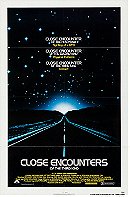
 2135
2135
 7.3
7.3
 7.6
7.6
